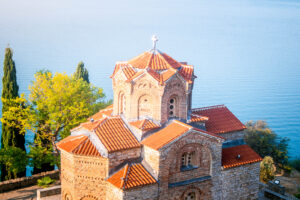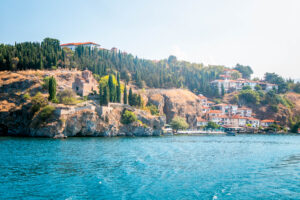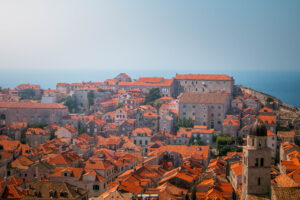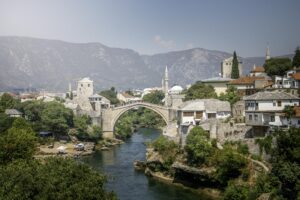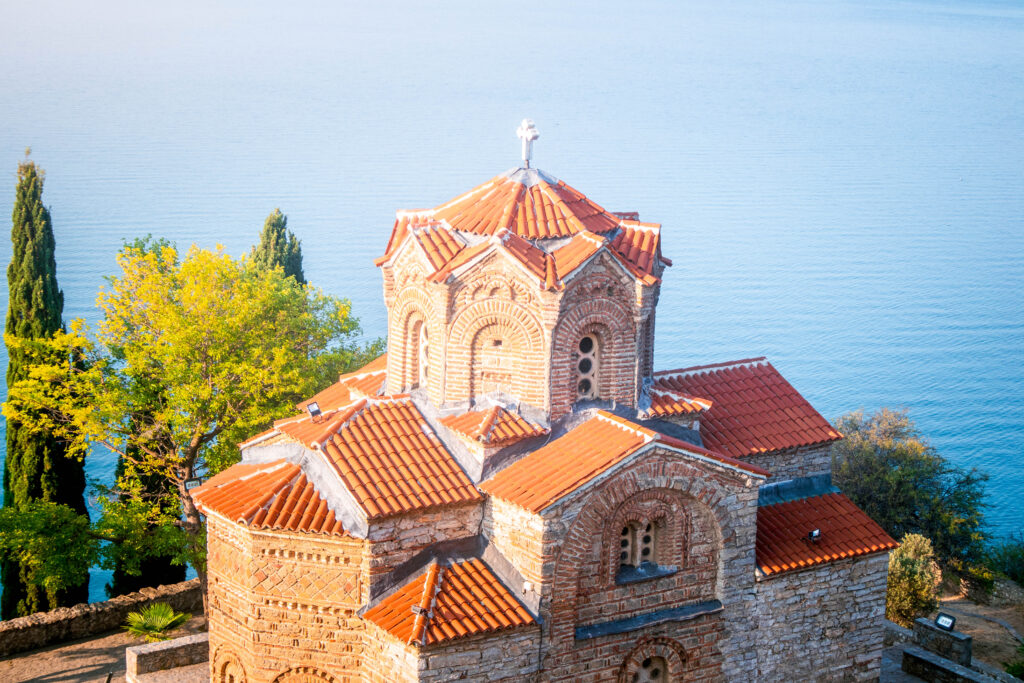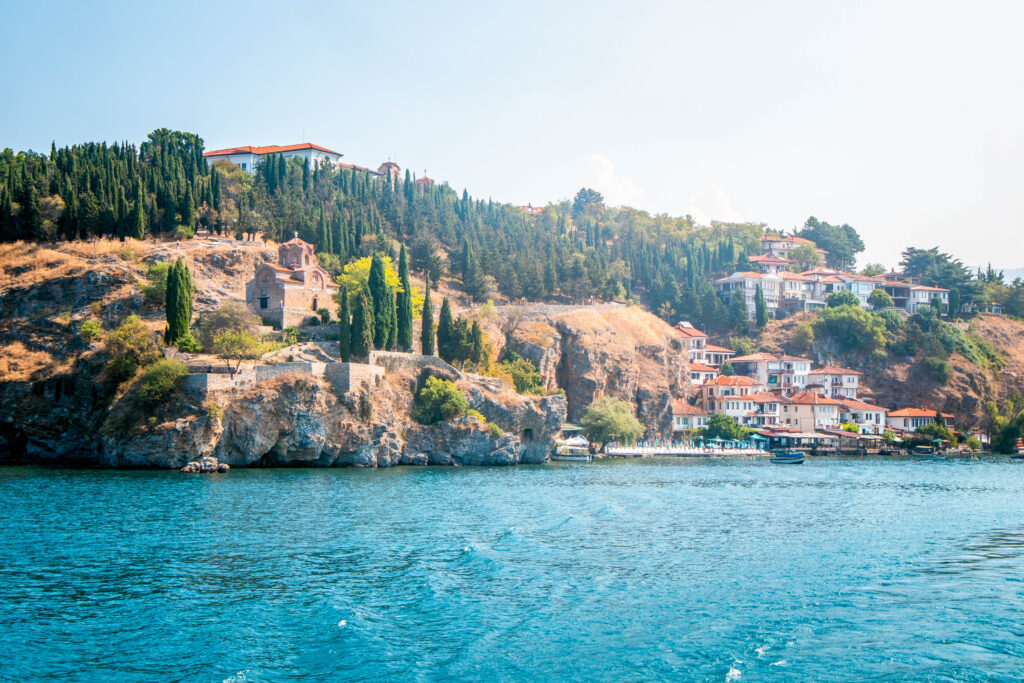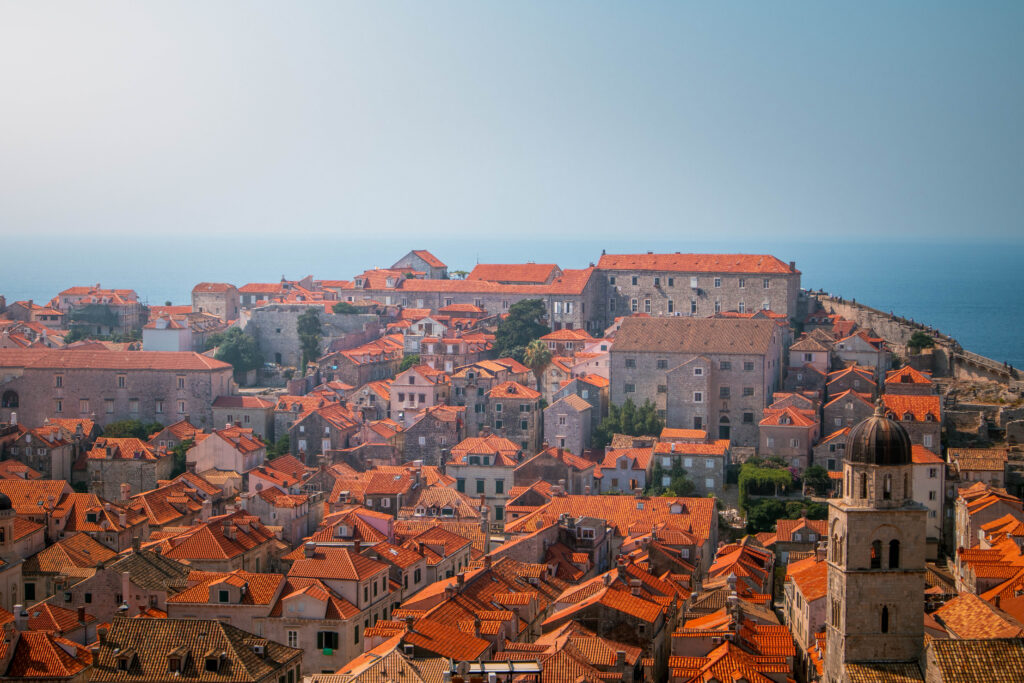With only an estimated global population of around 1100 individuals, the Iberian lynx is a highly endangered species, making it a valuable asset to the natural world. Responsible tourism has emerged in recent years as a crucial way to conserve this animal while supporting the local economy. This article provides all you need to know to plan an excursion to Andújar Natural Park in search of the elusive Iberian lynx.
📌 Short on time? Pin for later!
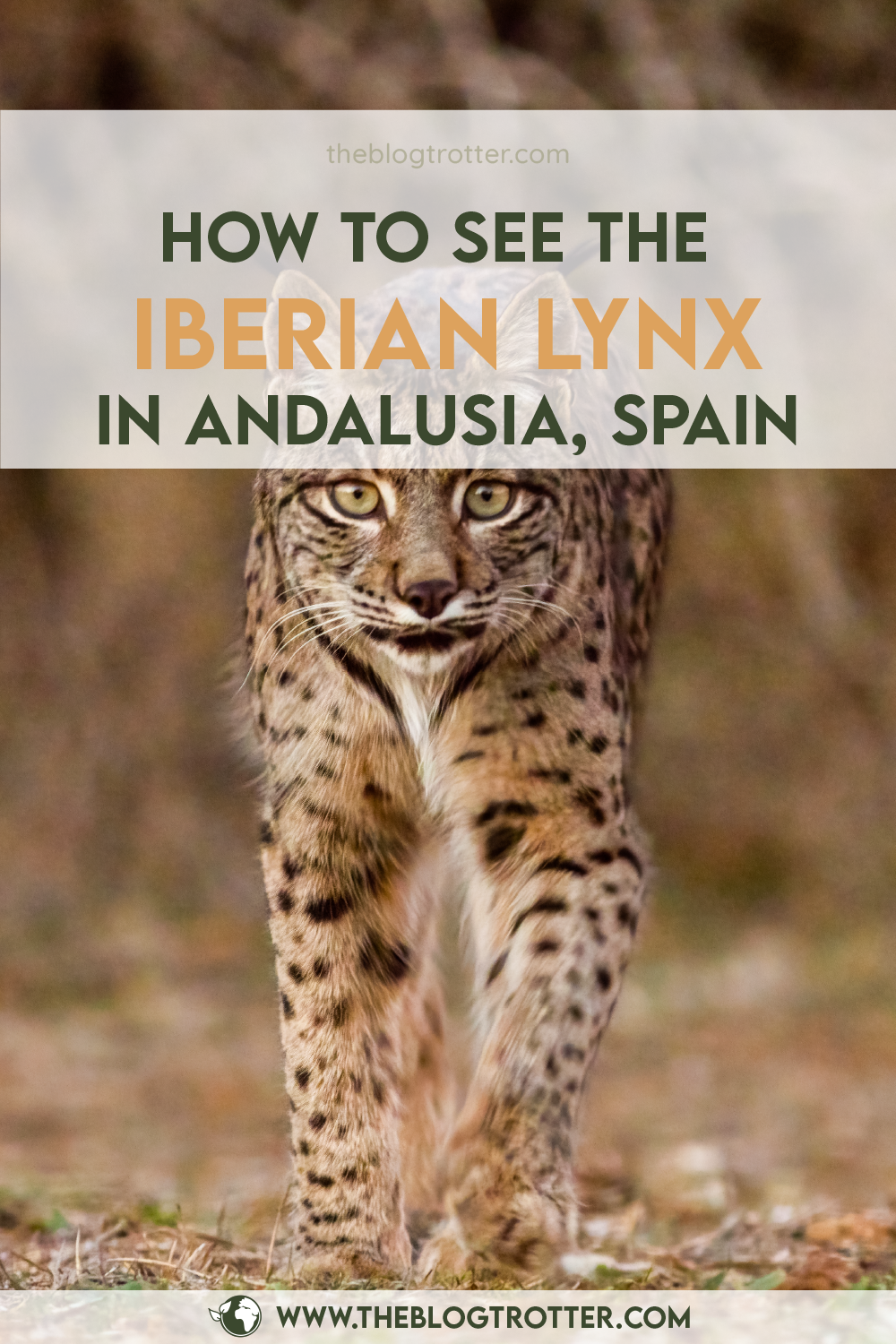
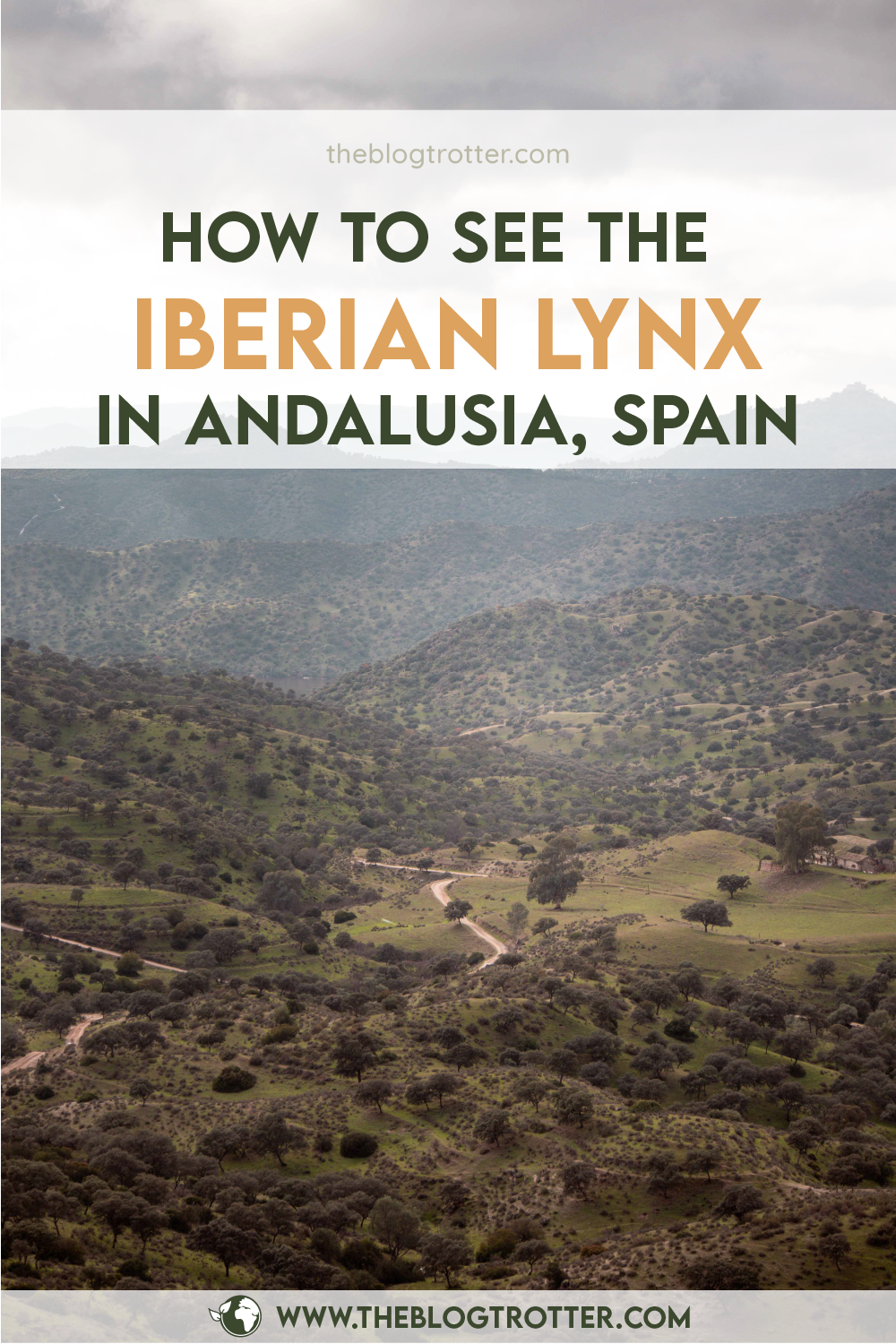

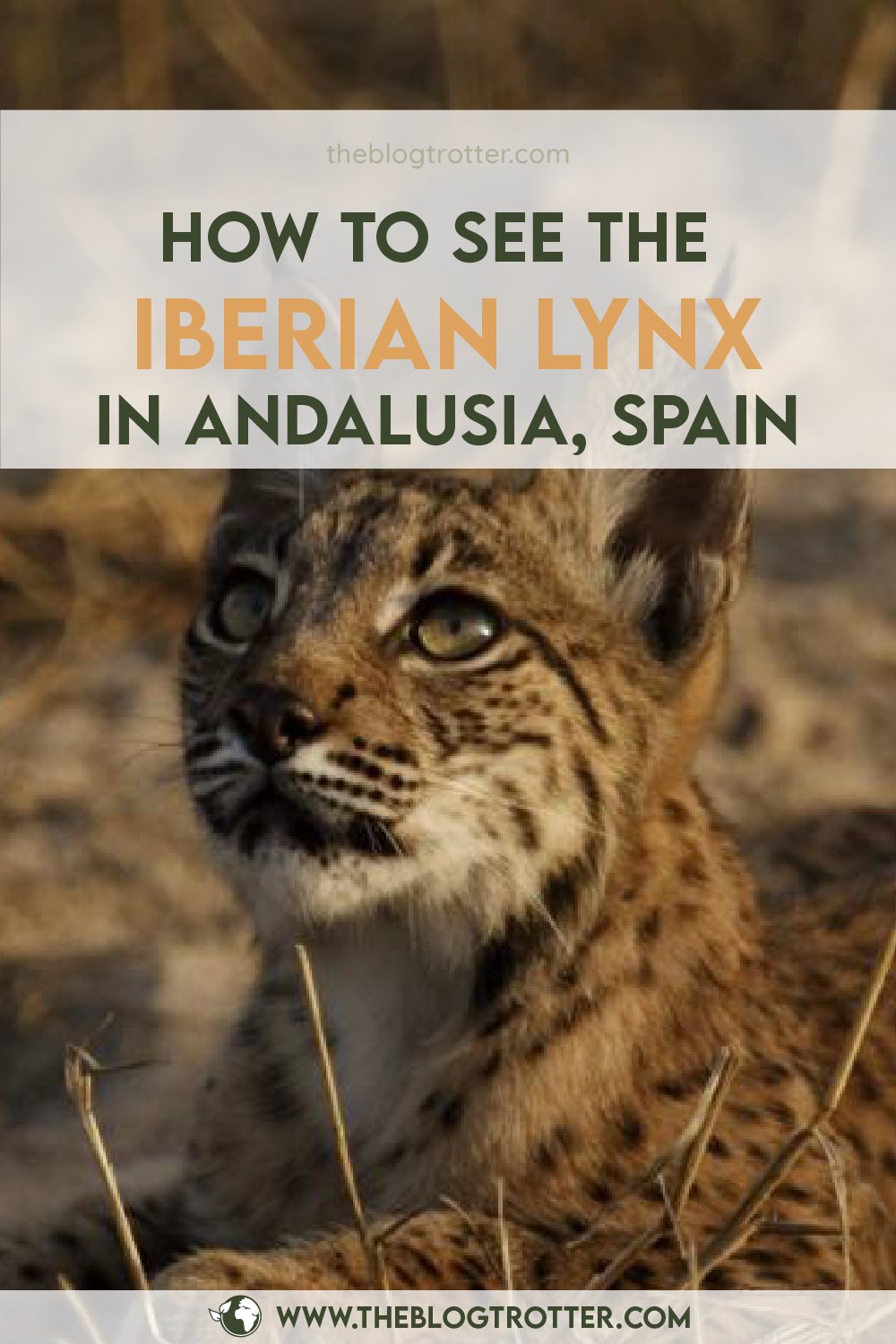
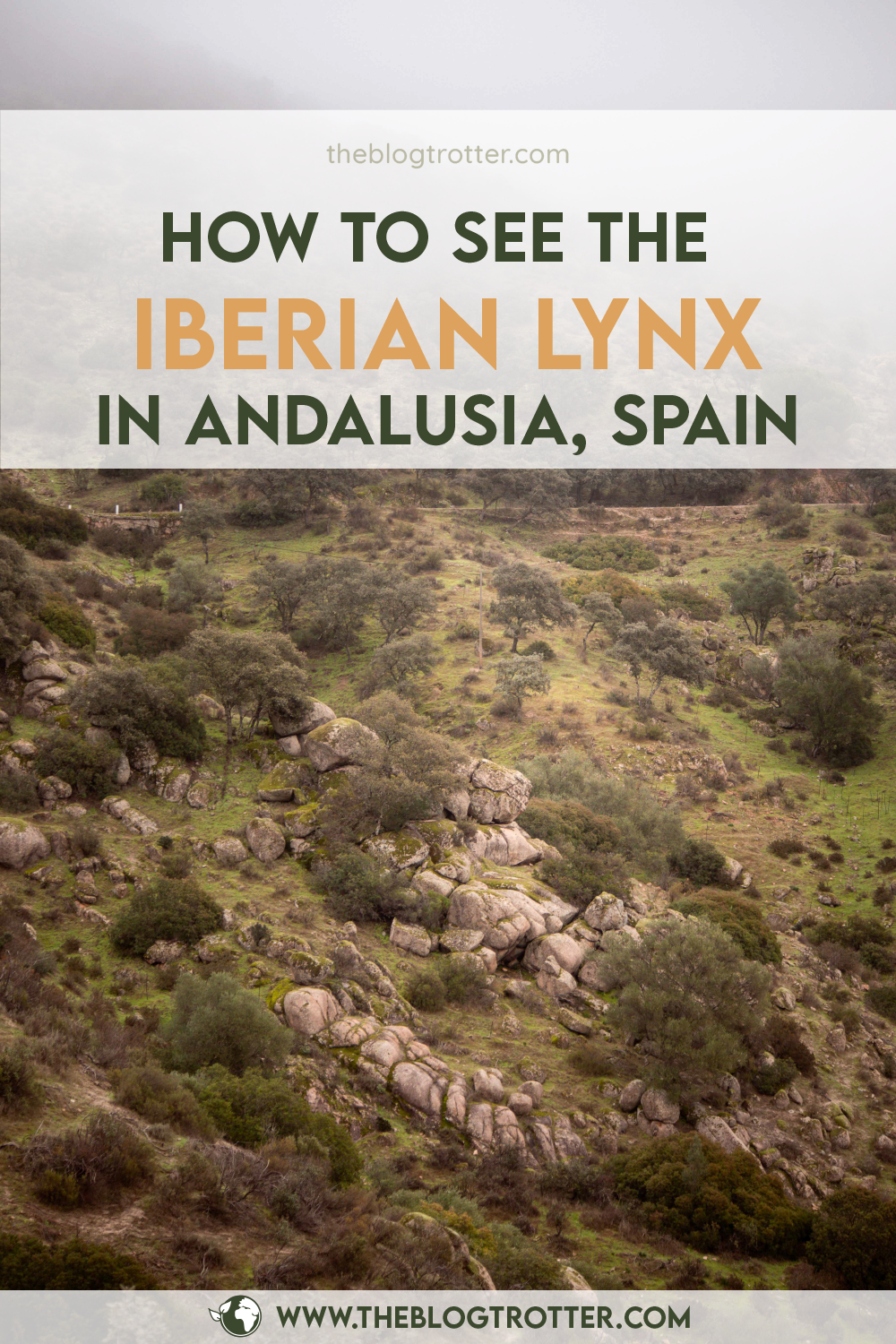
Understanding the Iberian Lynx, the most threatened feline
How to recognise the Iberian lynx?
The Iberian lynx, also known as Lynx pardinus, is a medium-sized wild cat species exclusive to the Iberian Peninsula. It has a distinctive appearance, with a short tail, tufted ears, and spotted coat, including a unique facial ruff made of longer fur around its face and neck. Iberian Lynx’s fur ranges from yellowish to rusty tints, with spots that blend well in the bush for camouflage.
The Iberian Lynx is significantly smaller than the European Lynx: males weigh up to 15 kg and females up to 10 kg. Their height ranges from 50 to 70 cm, and they don’t exceed 110 centimeters in length.
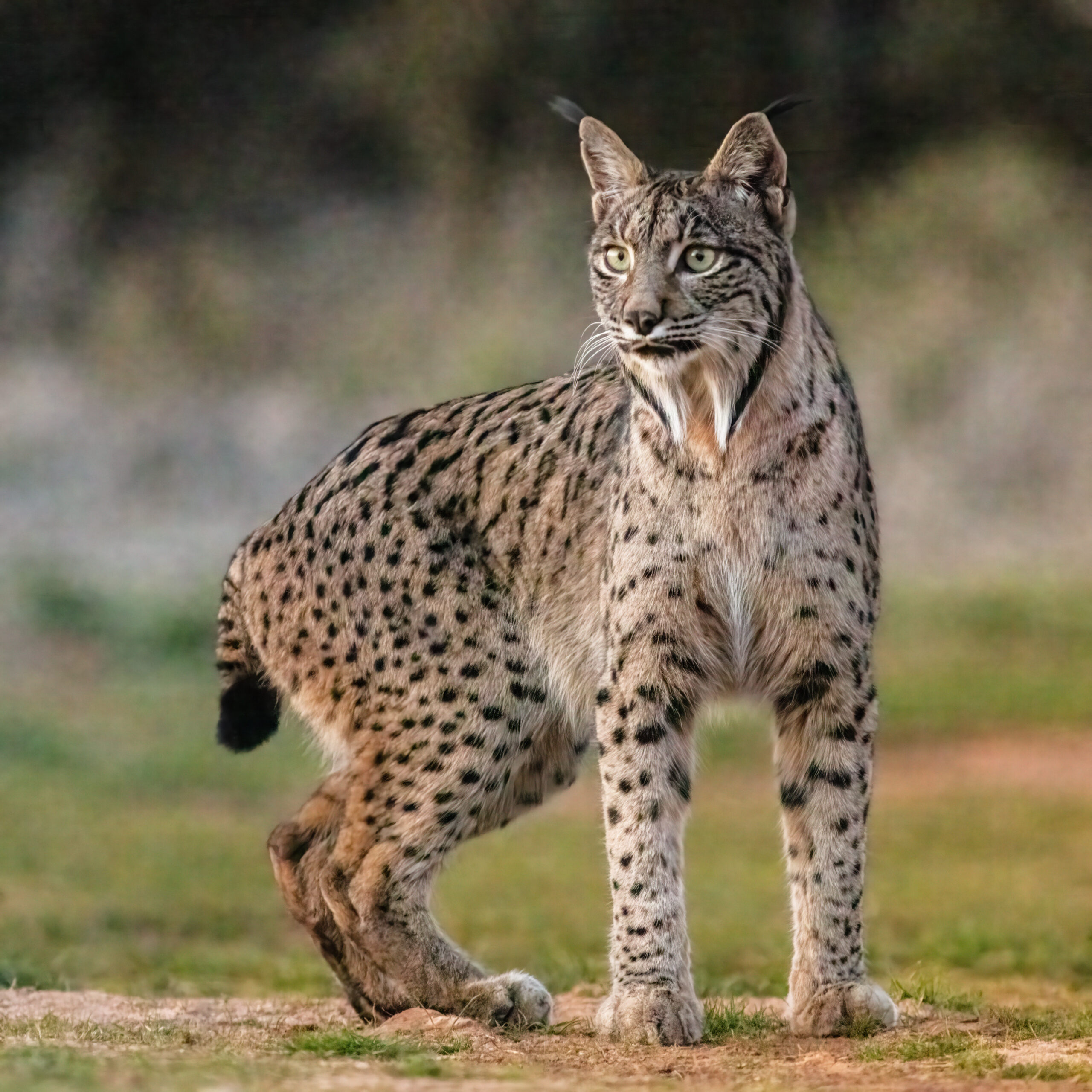
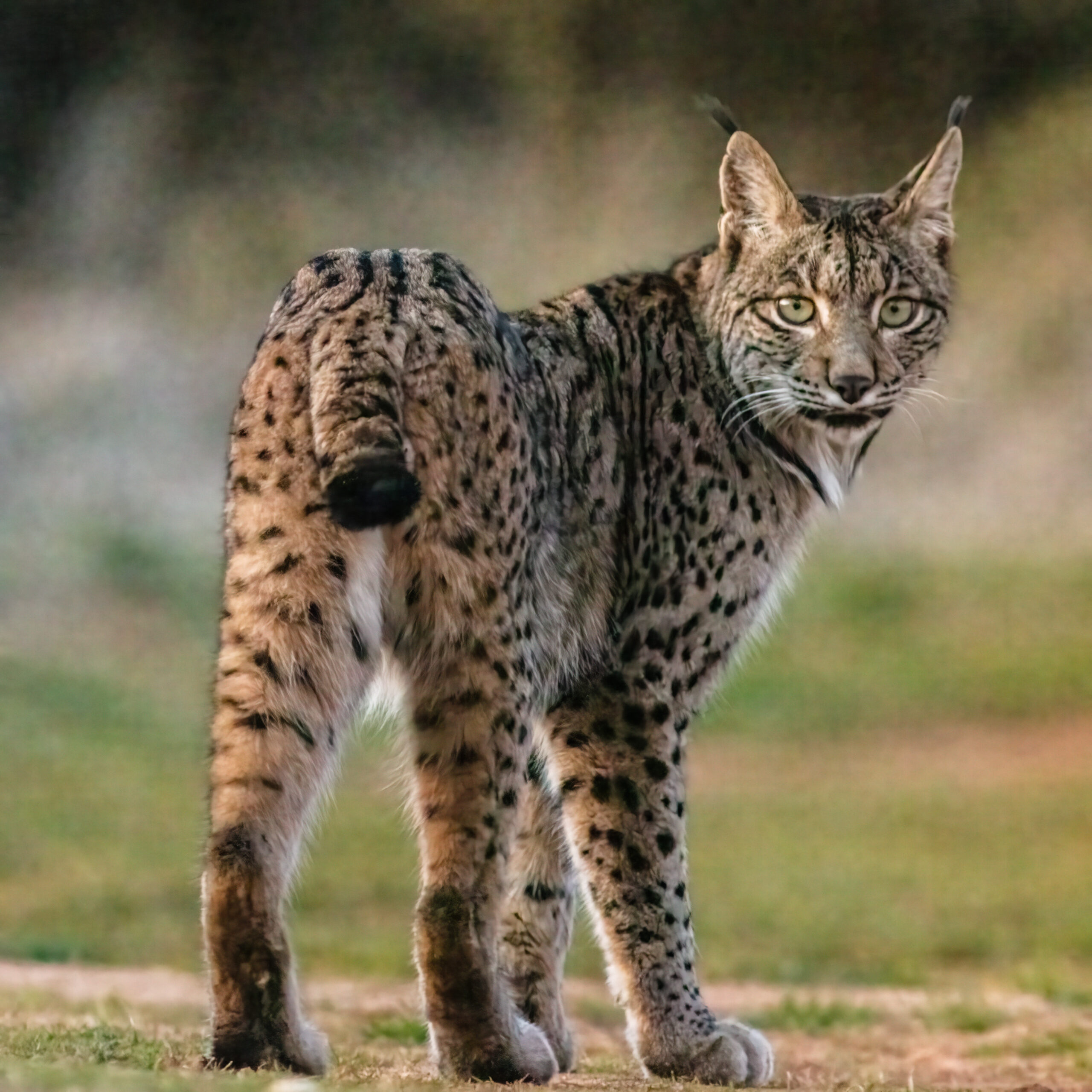
What's the natural habitat of the Iberian lynx?
The Iberian Lynx is a territorial, solitary cat that hunts at dawn and dusk. Over 80% of its diet is comprised of rabbits. As a consequence, it needs a territory with open grassy and scrubs area where these preys are abundant. It also requires sheltered areas with dense vegetation for reproduction. Since it provides a perfect mix of two, Andújar Natural Park makes the perfect habitat for this species.
When hunting, the lynx uses stalking and waiting tactics, crouching in the bushes, approaching its prey, then attacking with a bite to the neck. Afterwards, it carries the prey to a secluded location to consume it safely. When rabbits are scarce, the Iberian lynx can also hunt birds, rodents, young deers and mouflons.
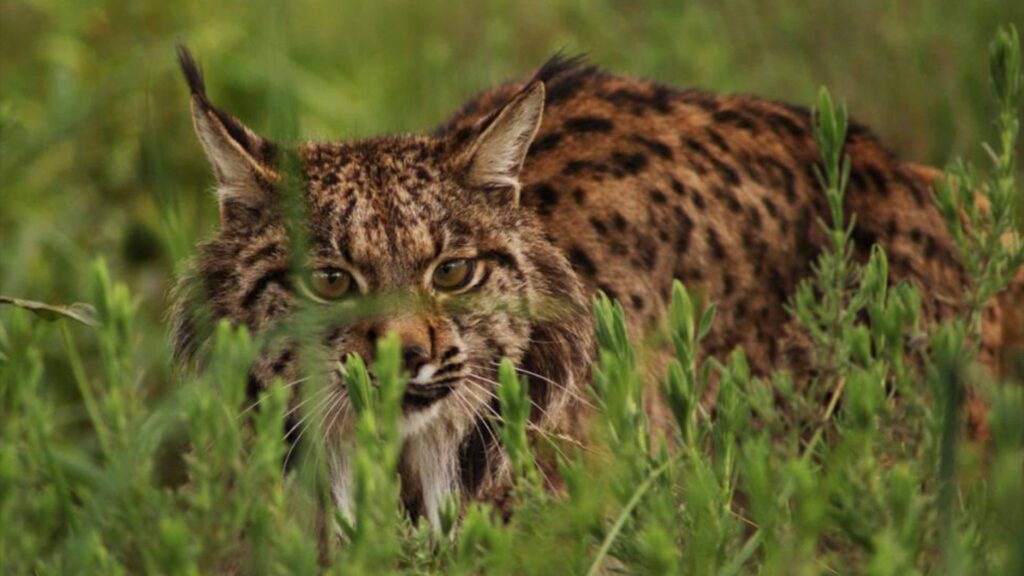
What's the Iberian lynx's lifecycle?
The mating season for the Iberian Lynx takes place between December and February. During this period, males and females come together, emitting howls as a mating call. After a gestation period of 60-70 days, the offspring are typically born in early spring. The litter sizes range from one to four cubs, and they seek shelter in cavities, rock crevices, and tree trunks.
The kittens start to eat solid food at one month. During the summer and autumn, the mother teaches them hunting and survival skills until they become independent at the age of 10-11 months. Females may reproduce at the age of two, but they usually wait until they establish their own territory before doing so.
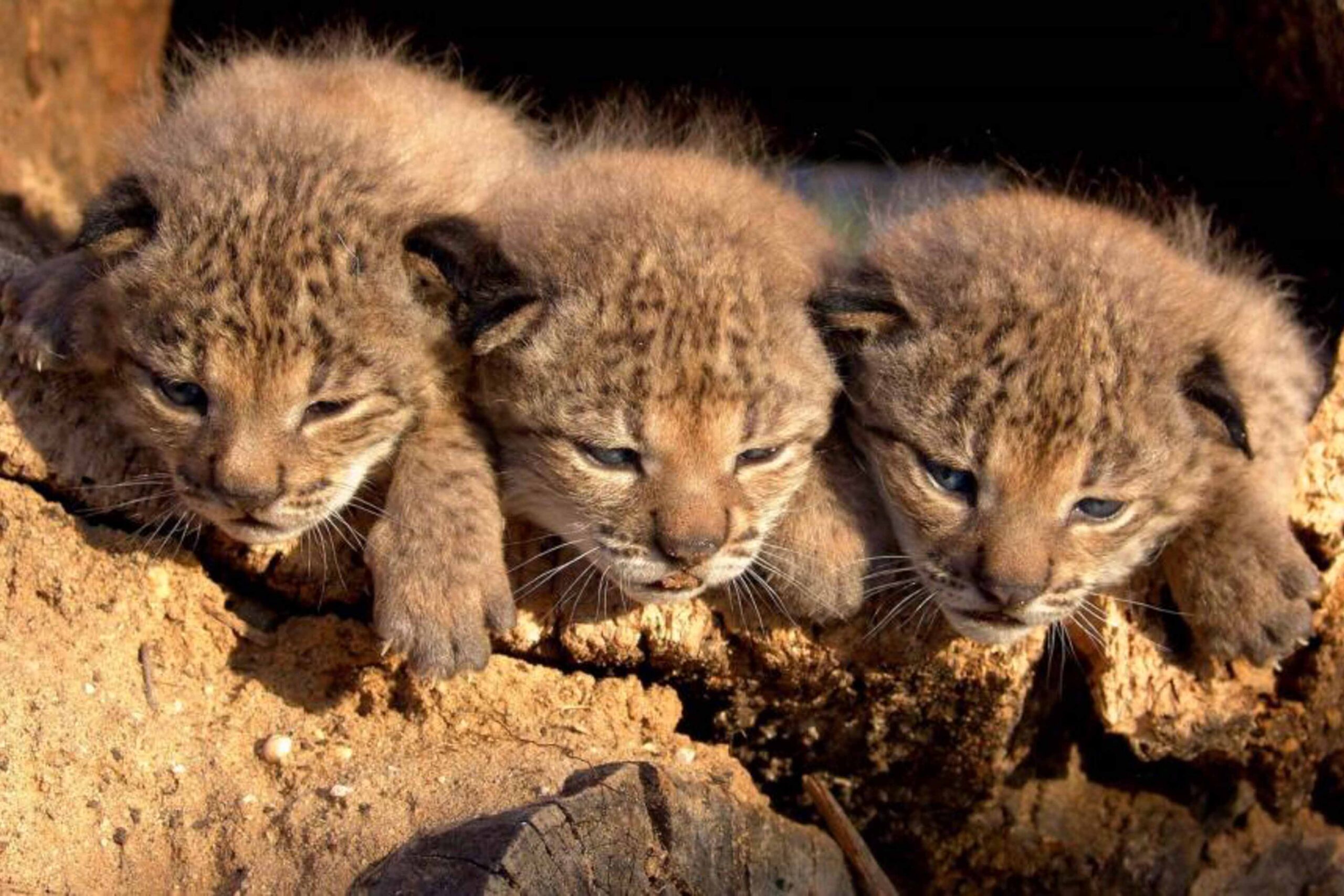
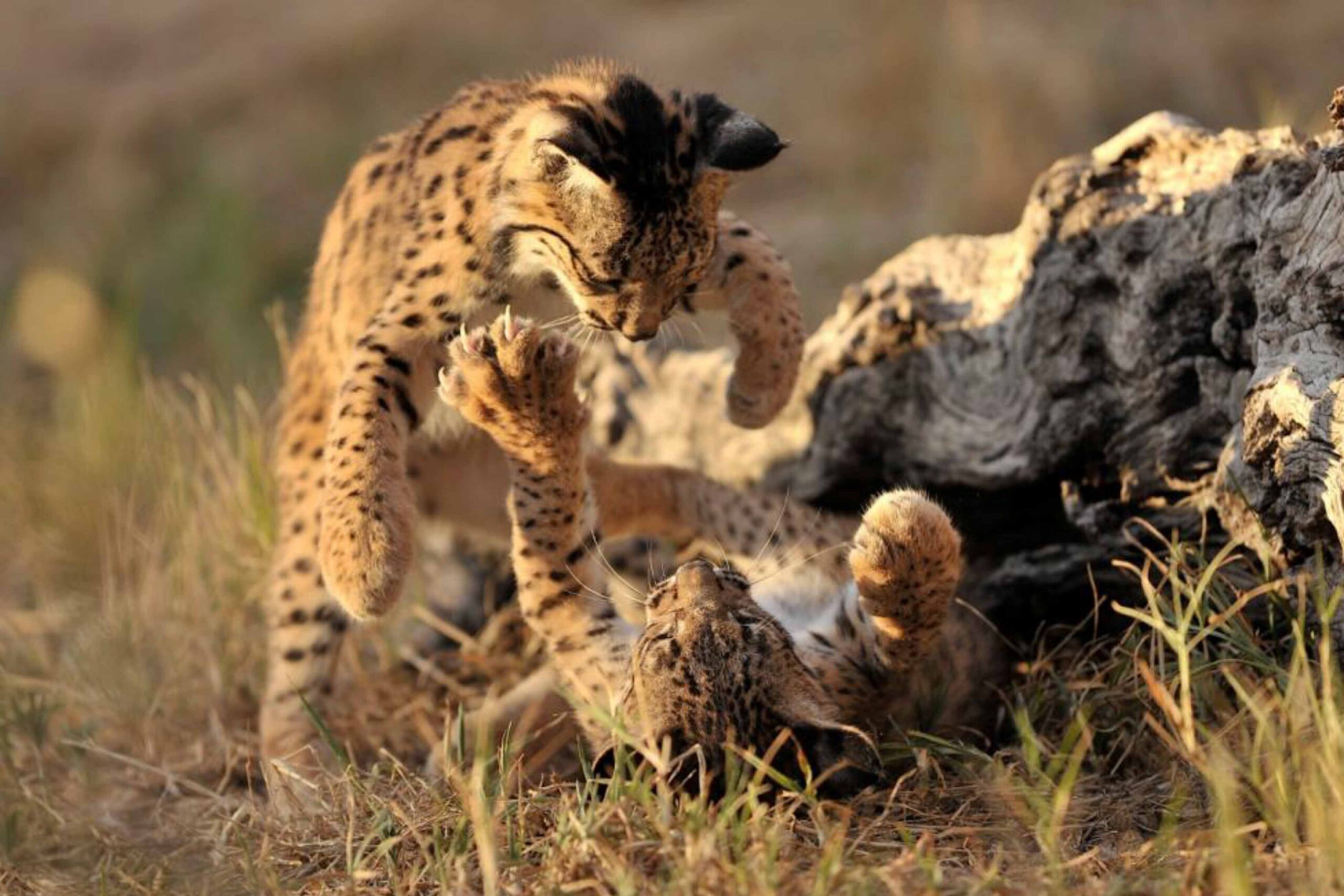
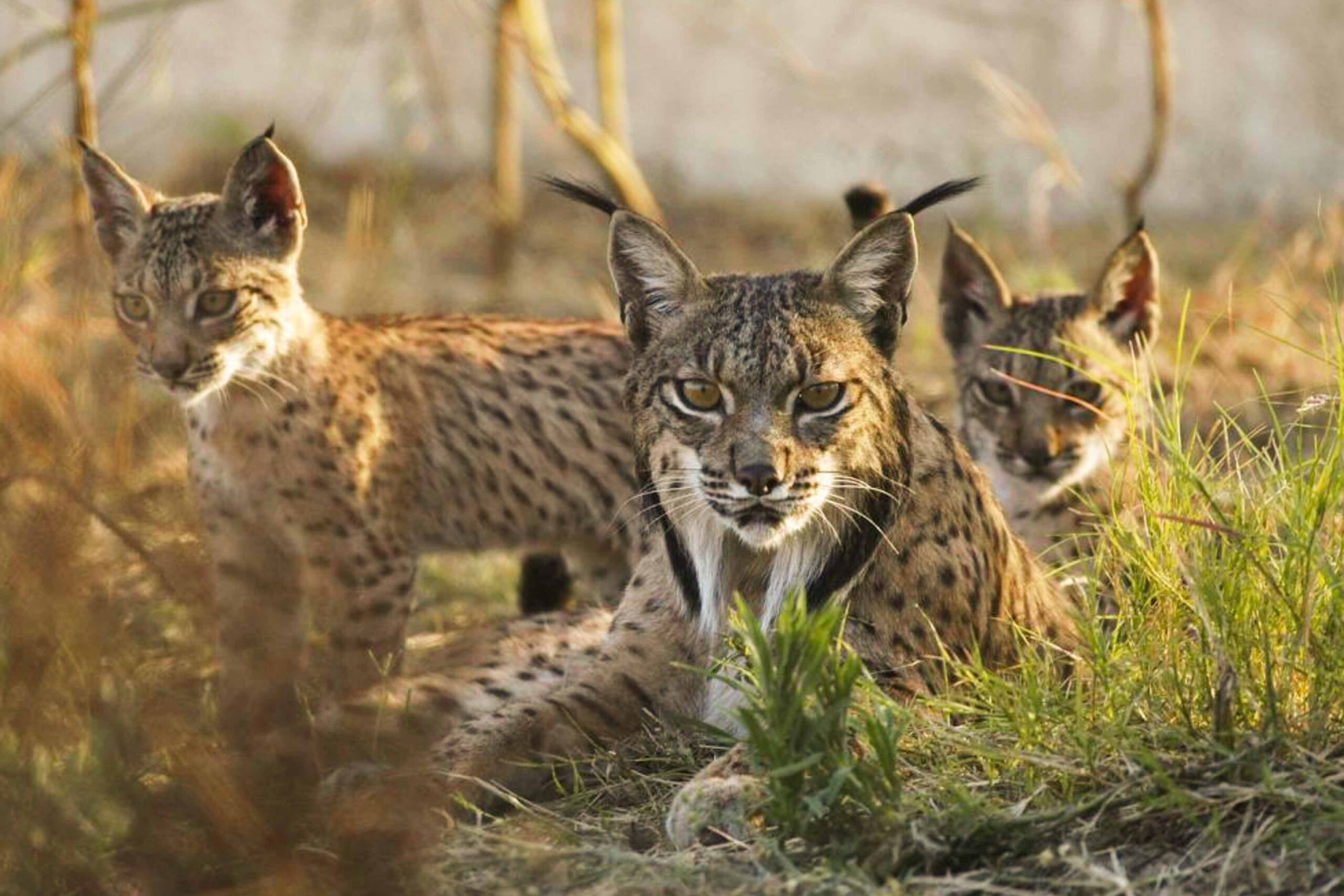
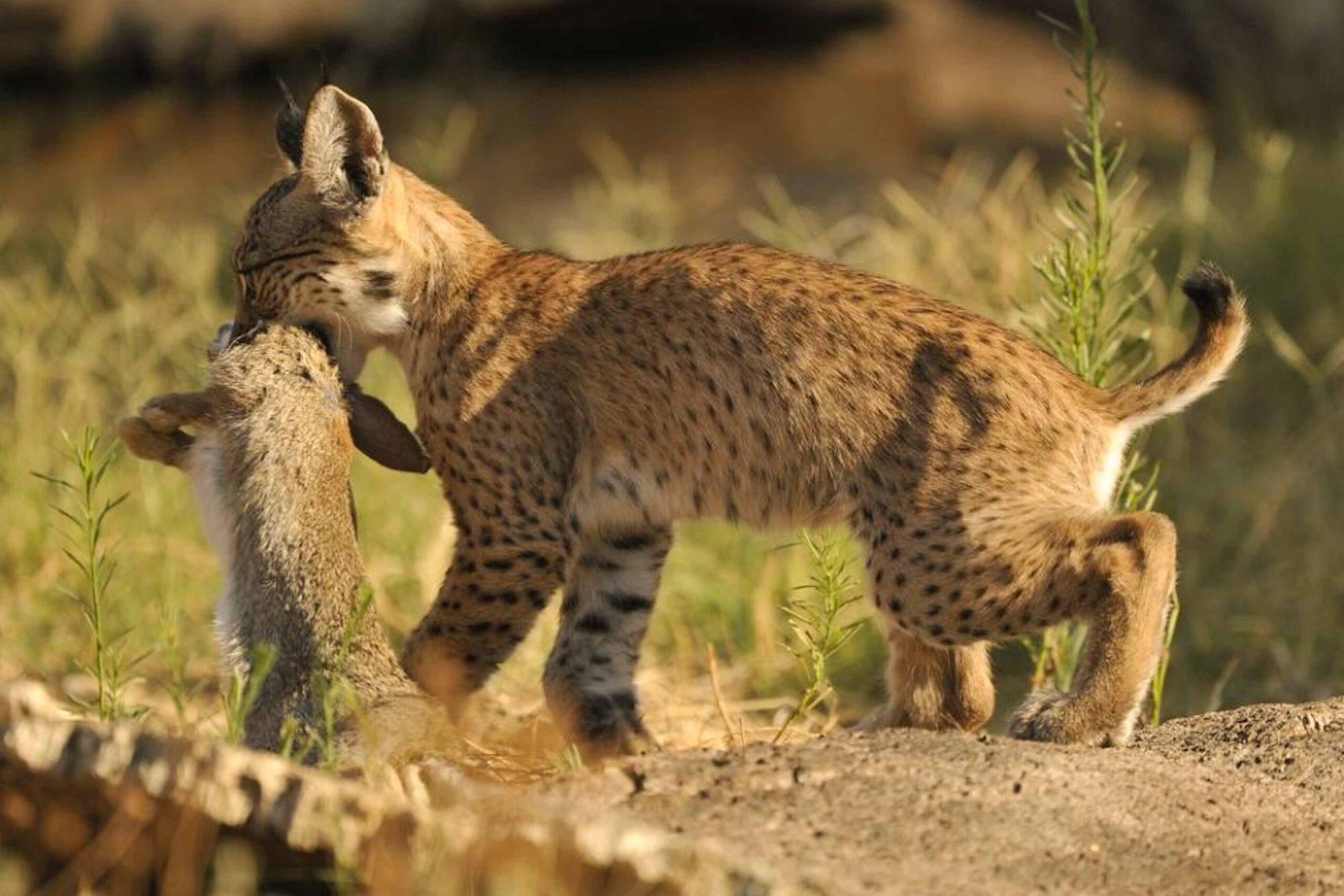
Why is the Iberian lynx endangered?
The Iberian Lynx used to occupy the whole Iberian Peninsula – Spain and Portugal – until the begininning of the 19th century. But by the end of the 20th century, its habitat had drastically decreased to two areas in Andalusia: Doñana and Sierra Morena. The International Union for Conservation of Nature (IUCN) classifies the species as Endangered due to the high threat to its survival.
The IUCN conservation status is a global standard for assessing the extinction risk of species, with categories ranging from "Least Concern" to "Extinct". It is widely used by conservationists and governments to prioritize conservation efforts and make informed decisions about species management.
The Iberian lynx is currently facing numerous threats, including habitat loss and fragmentation, decline in rabbit populations, as well as accidental deaths and poaching.
- Habitat alteration and fragmentation: The natural habitat has been altered and fragmentated resulting from several human activities. Traditional agricultural and livestock practices have been abandoned, and activities like intensive agriculture and excessive stocking have emerged instead. Furthermore, monospecific reforestation has also contributed to habitat alteration. Infrastructure development, such as highways and high-speed roads, and reservoir construction have further compounded the problem by fragmenting the territory. This has made communication between populations difficult and prevented the natural dispersal of young lynxes.
- Decline in rabbit populations: Since the Iberian lynx’s diet is mainly composed of rabbit, its conservation is tightly linked to the abundance and health of these small prey mammals. Unfortunately, myxomatosis and the haemorrhagic disease have caused a drastic reduction in the rabbit population.
- Unnatural deaths: Roadkill, illegal hunting, and predator control methods like snares, traps, and poisons, are also major threats to the lynx’s survival. In the Sierra de Andújar and its surroundings, traffic signs advise drivers to take precautions.
What is being done for the Iberian lynx conservation?
Conservation efforts to save the Iberian lynx from extinction have been underway for several decades. One of the most successful conservation programs is the Iberian Lynx Conservation Breeding Program, which aims to increase the number of lynx in the wild through captive breeding and reintroduction. To revive its dwindling numbers, protected areas with high prey density (especially rabbits) were established. The program has been successful in increasing the lynx population, with the number of individuals in the wild rising from only 94 individuals in 2002 to over 1100 in 2020. The Iberian lynx went from ‘Critically Endangered’ to ‘Endangered’ IUCN status in 2015. The improved status of this species is all due to intensive ongoing conservation actions.
Habitat restoration and wildlife corridors are also crucial components of the conservation efforts. Habitat restoration involves restoring degraded areas to their natural state, providing a suitable habitat for the Iberian lynx. Wildlife corridors connect fragmented habitats, allowing animals to move between them and increasing genetic diversity.

How to Spot the Iberian Lynx in Andújar Natural Park?
Spotting the Iberian lynx in the wild is a challenging but rewarding experience. In this section, I will provide you with some tips for maximizing your chances of seeing this elusive feline while also ensuring that you do not disturb its natural behaviour.
Introduction to Andújar Natural Park
The Sierra de Andújar, located in the central part of the Sierra Morena range, is a natural park that is home to a diverse array of wildlife. This densely wooded park is known for its rocky hills, which range from 500 to 1290 metres in altitude over 74 000 hectares. It is one of the two places left in Spain – along with the Doñana National Park – that is the habitat of the elusive and highly endangered Iberian lynx.
The park’s Mediterranean forest and scrubland are one of Andalucia’s best-preserved expanses. The typical flora includes trees such as willow, poplar, stone and Austrian pines, and alder, along with an undergrowth of strawberry trees, lentisc, myrtle, wild olive, and oleander. Aromatic shrubs such as rosemary, thyme, and marjoram are abundant.
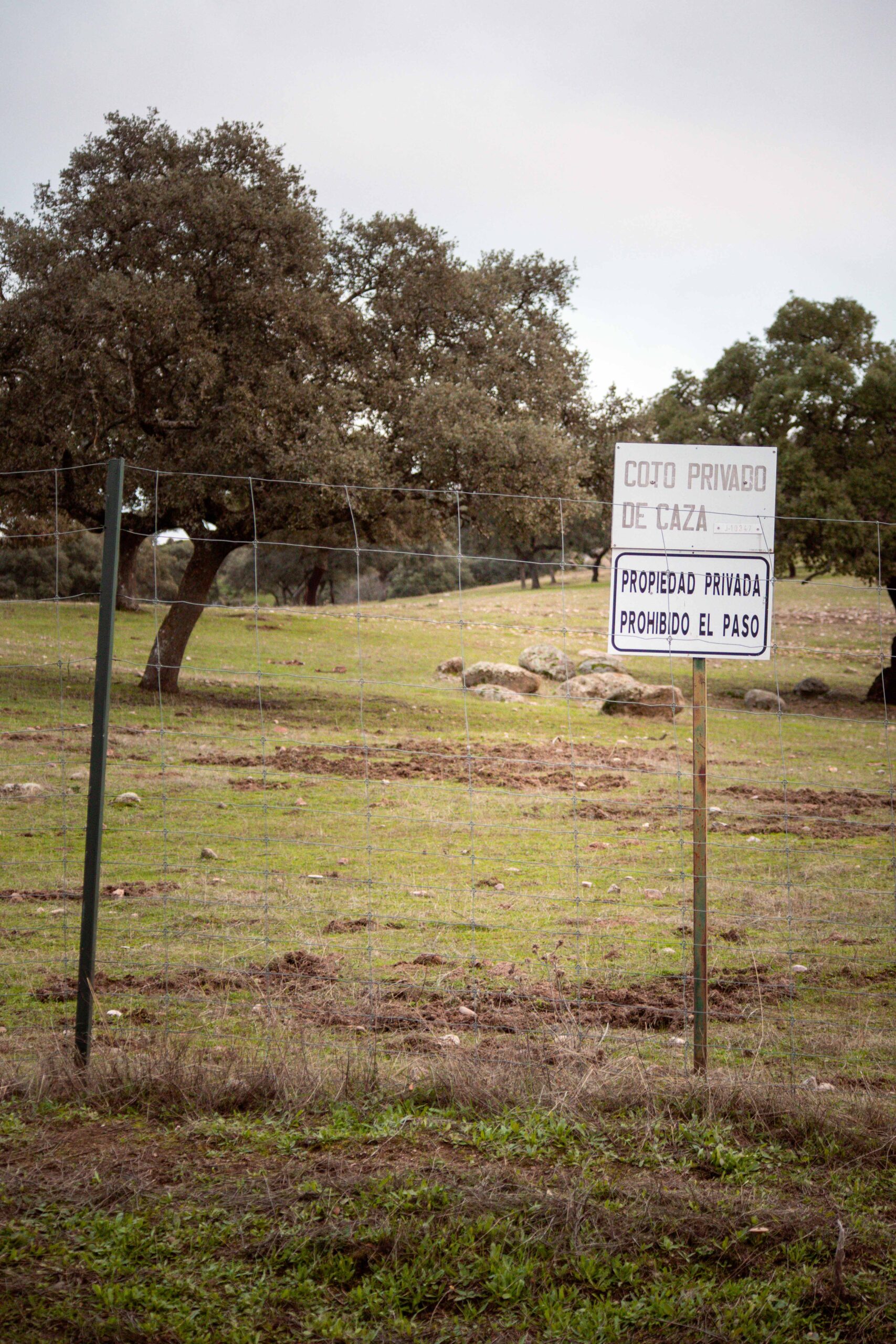
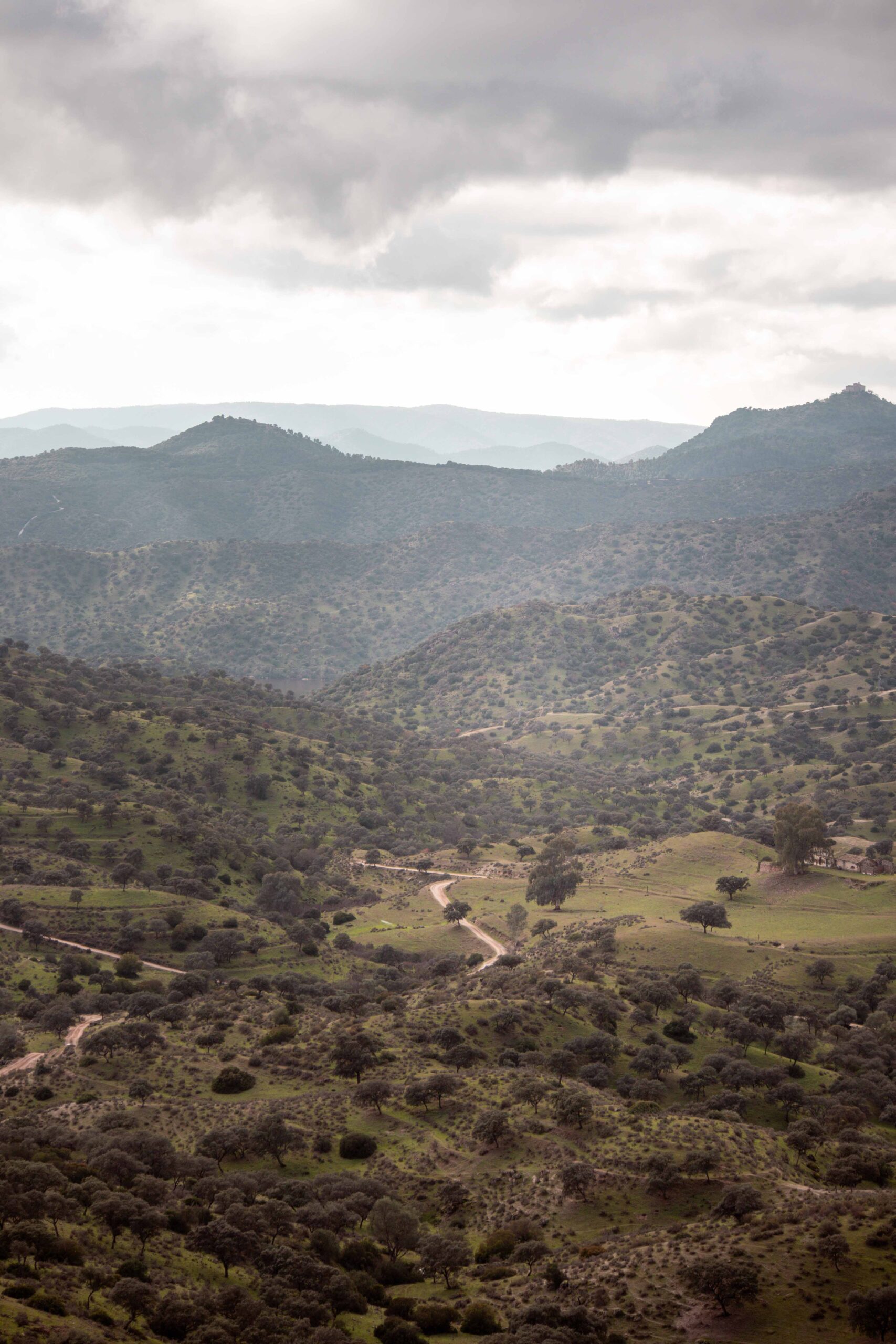
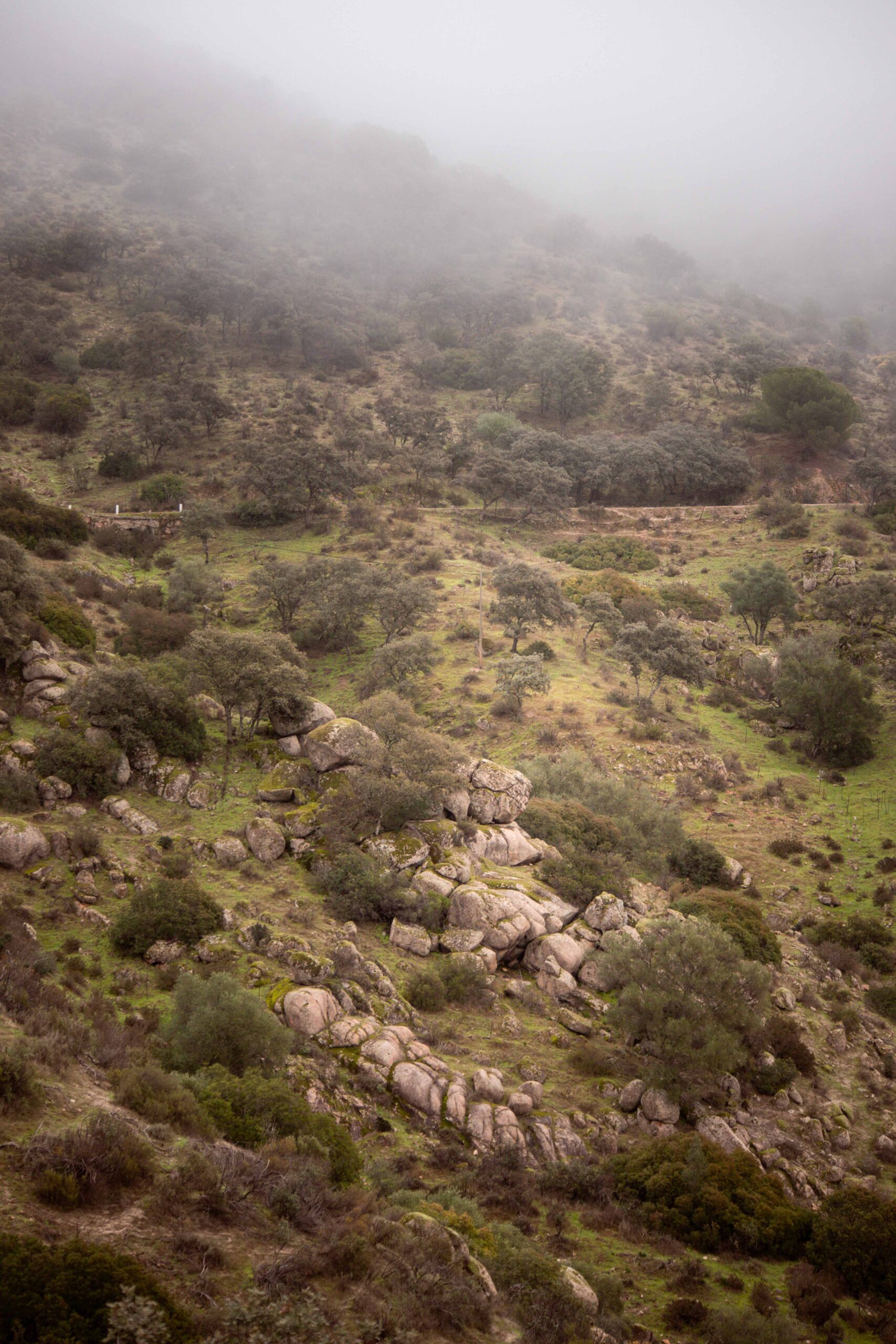
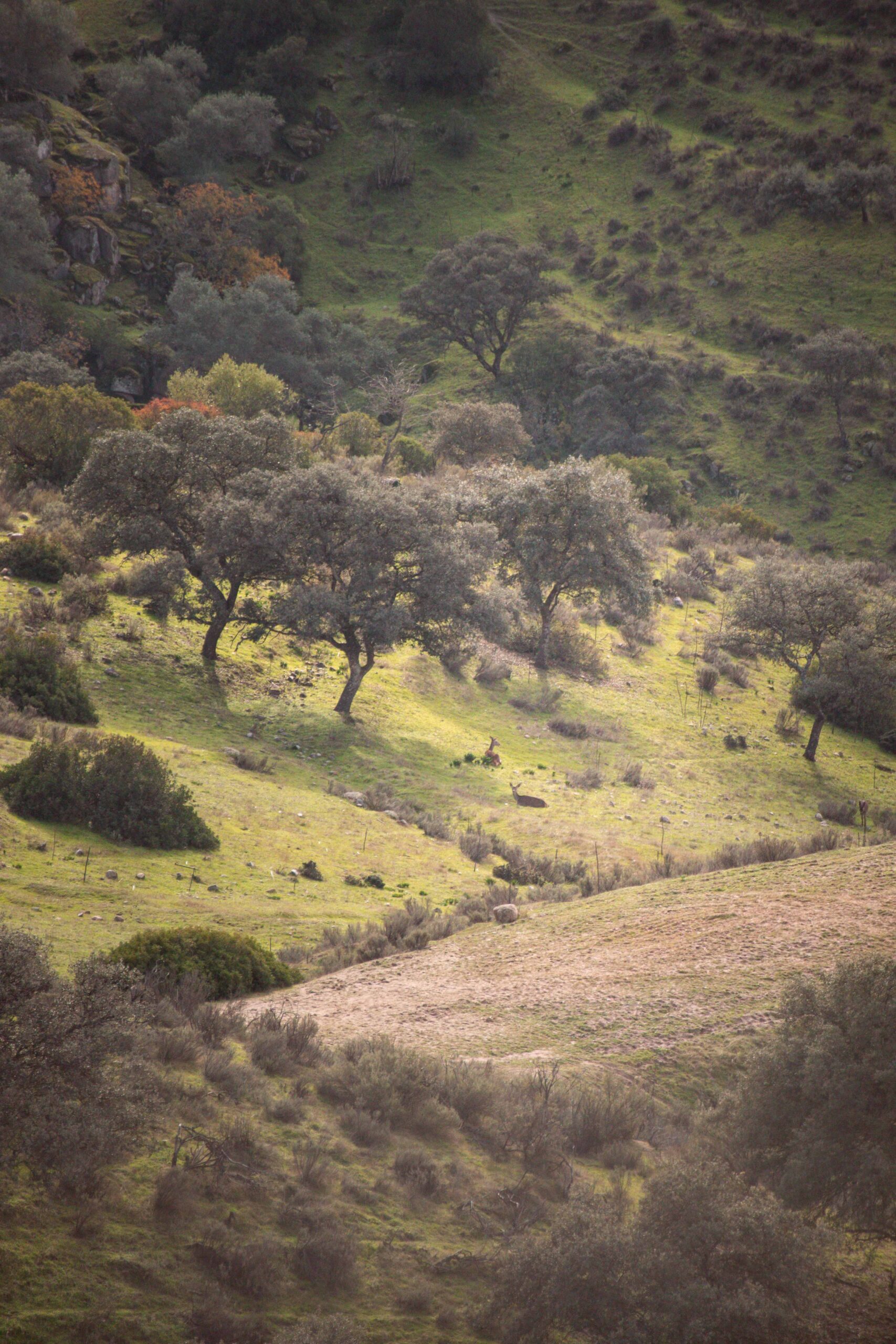
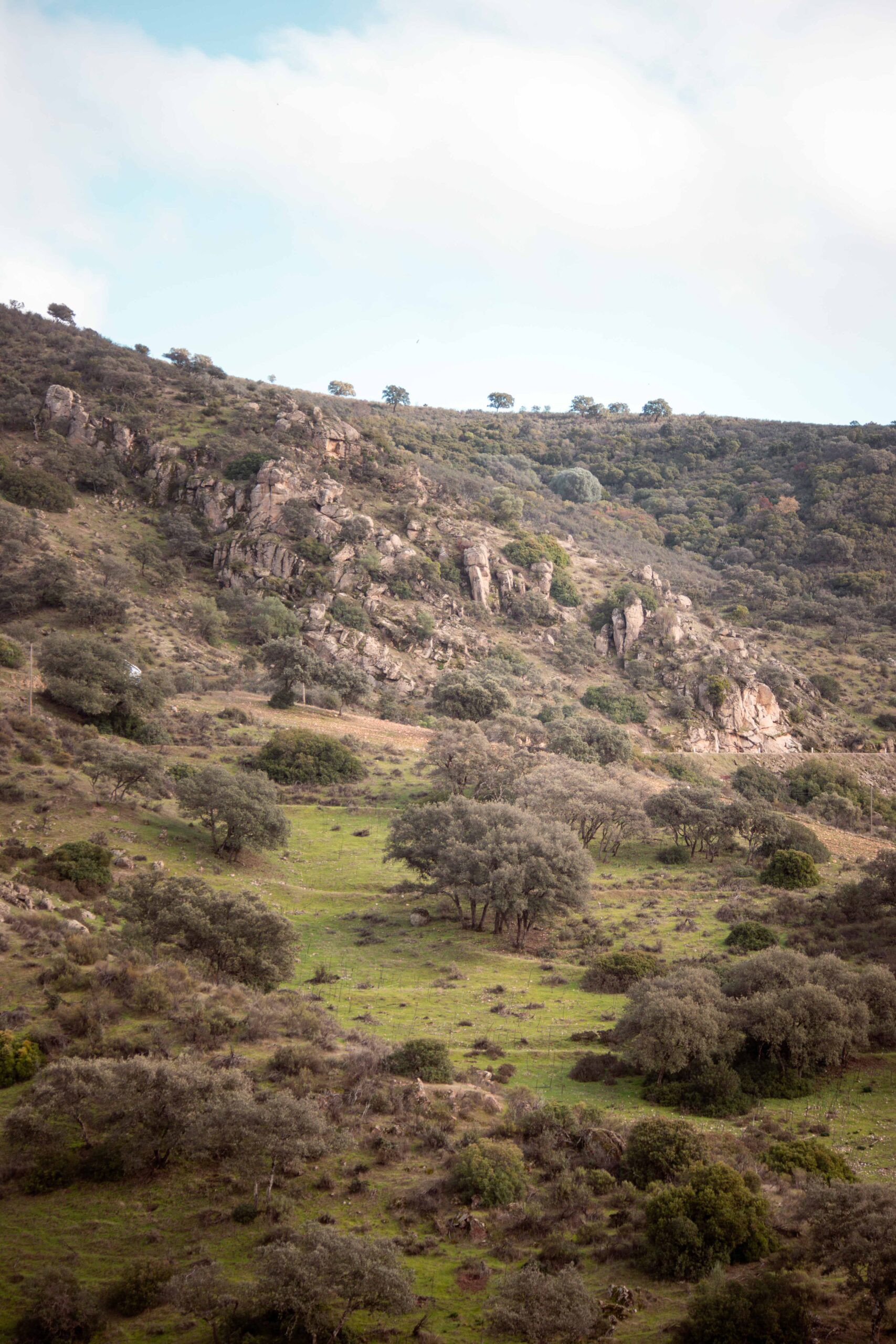

The park is also home to a variety of mammalian wildlife, including wolves, wild boars, mouflons, red, fallow and roe deer, Egyptian mongoose, wild cats, foxes, and otters. In addition, the park is a haven for birds of prey such as the black vulture and the Spanish imperial eagle, as well as a range of other bird species including the red-billed chough, azure-winged magpie, golden oriole, and nightingale.
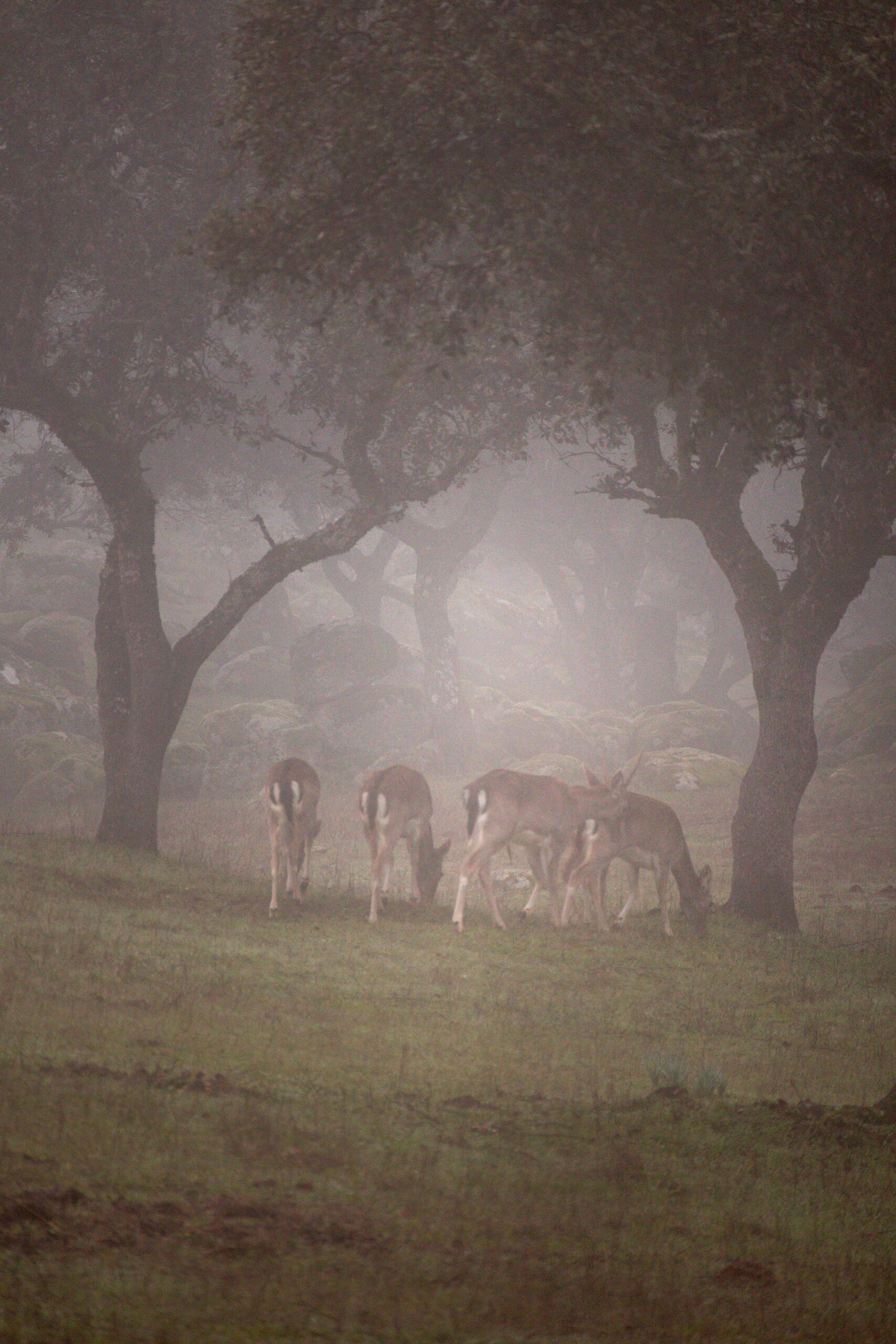
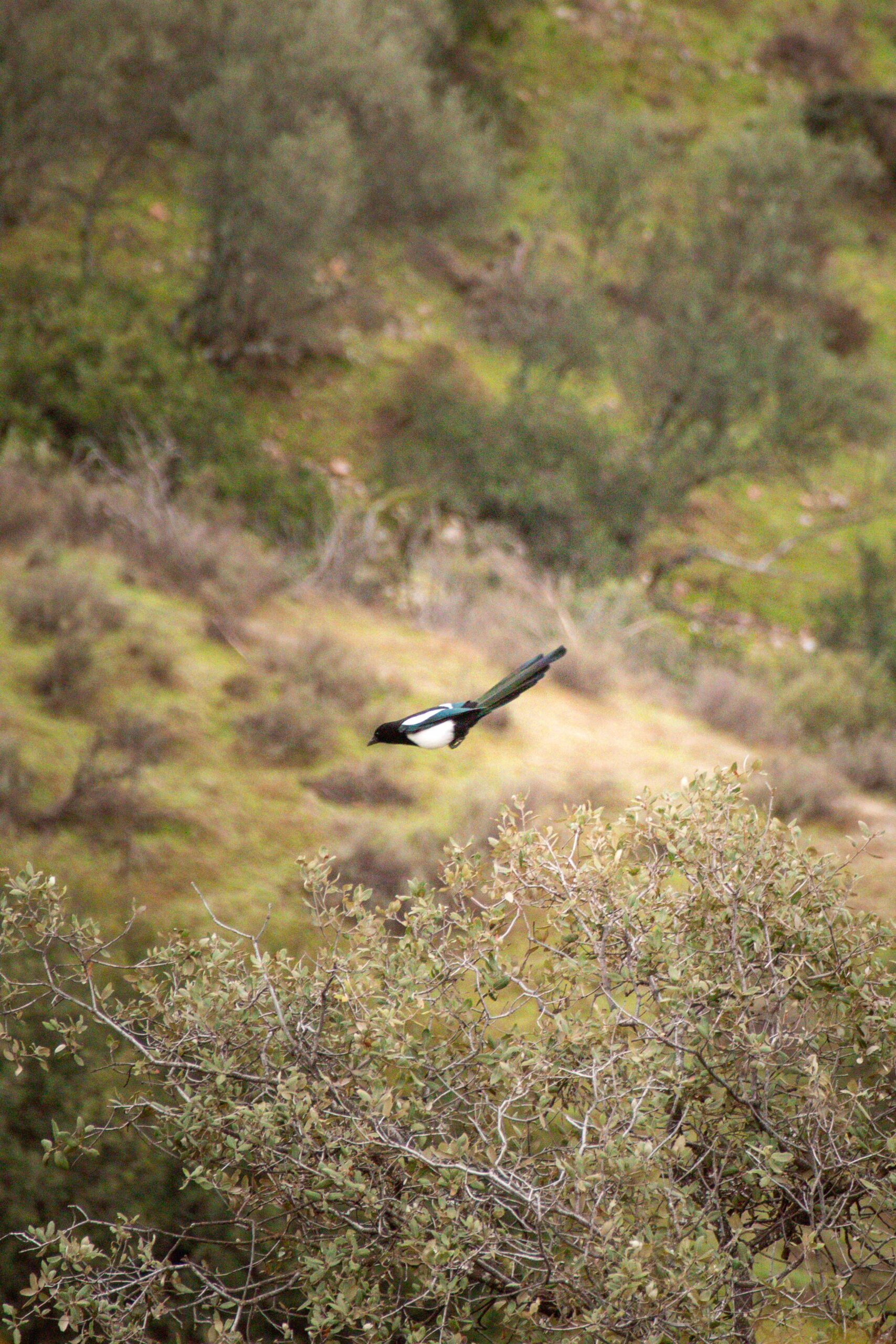
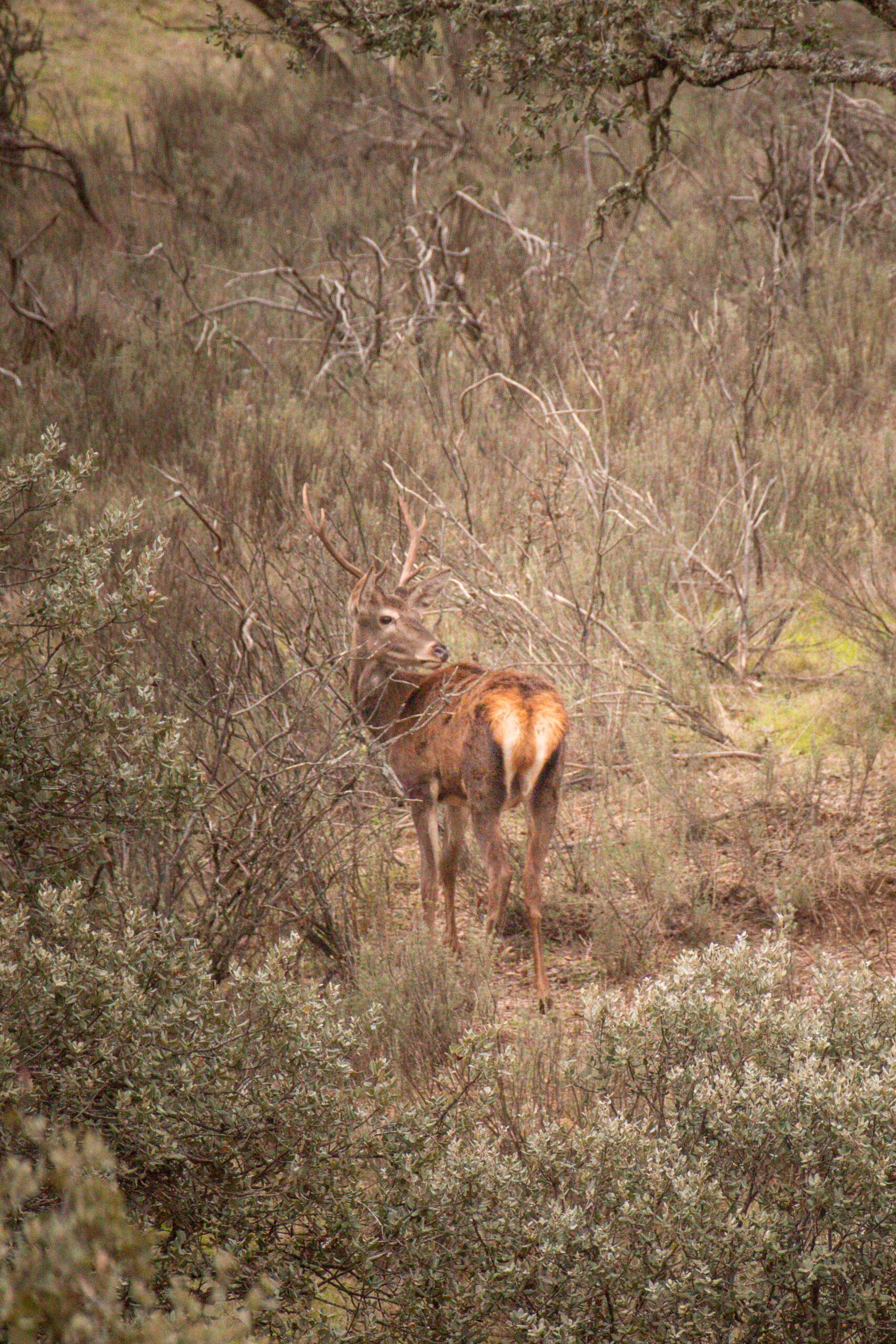
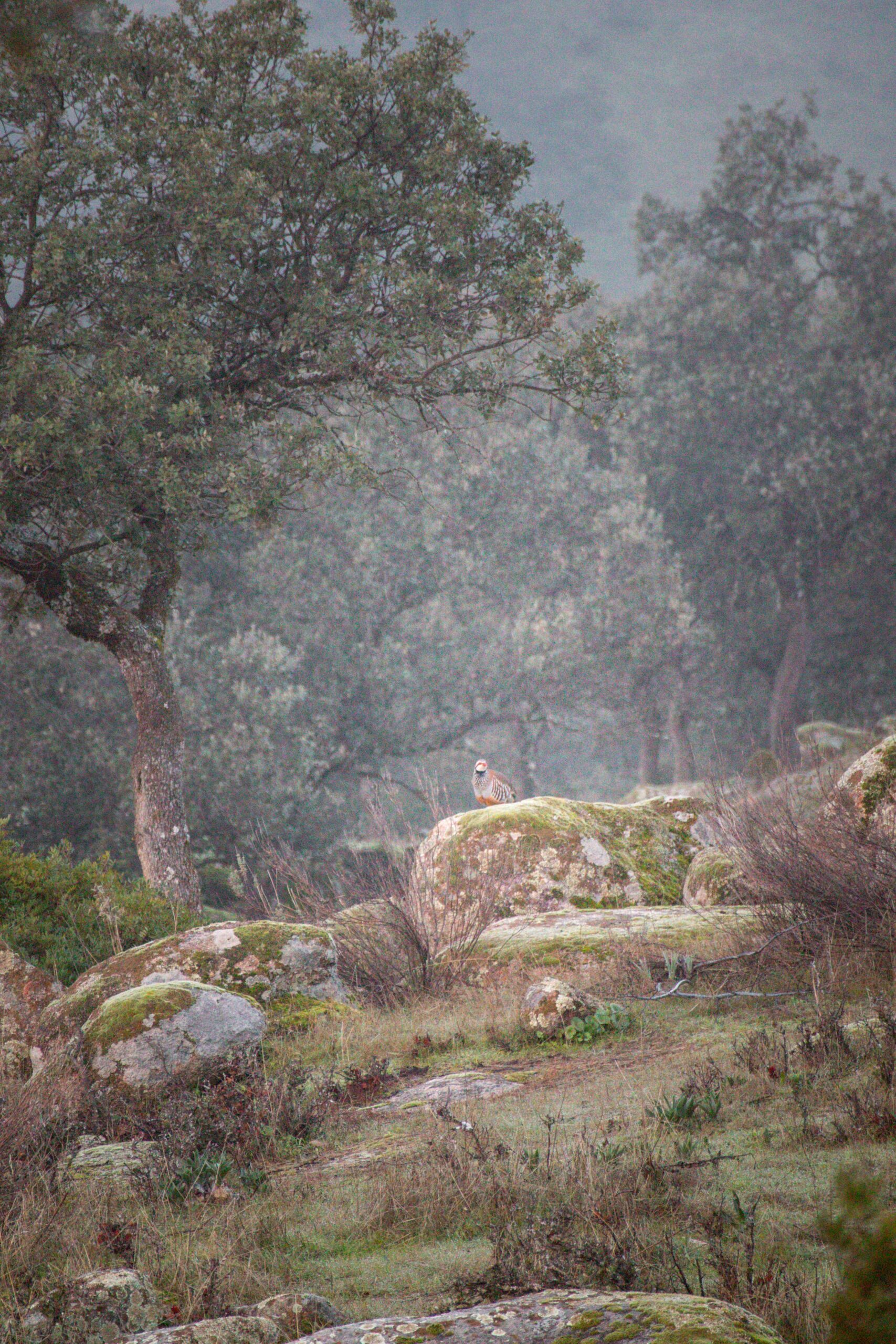
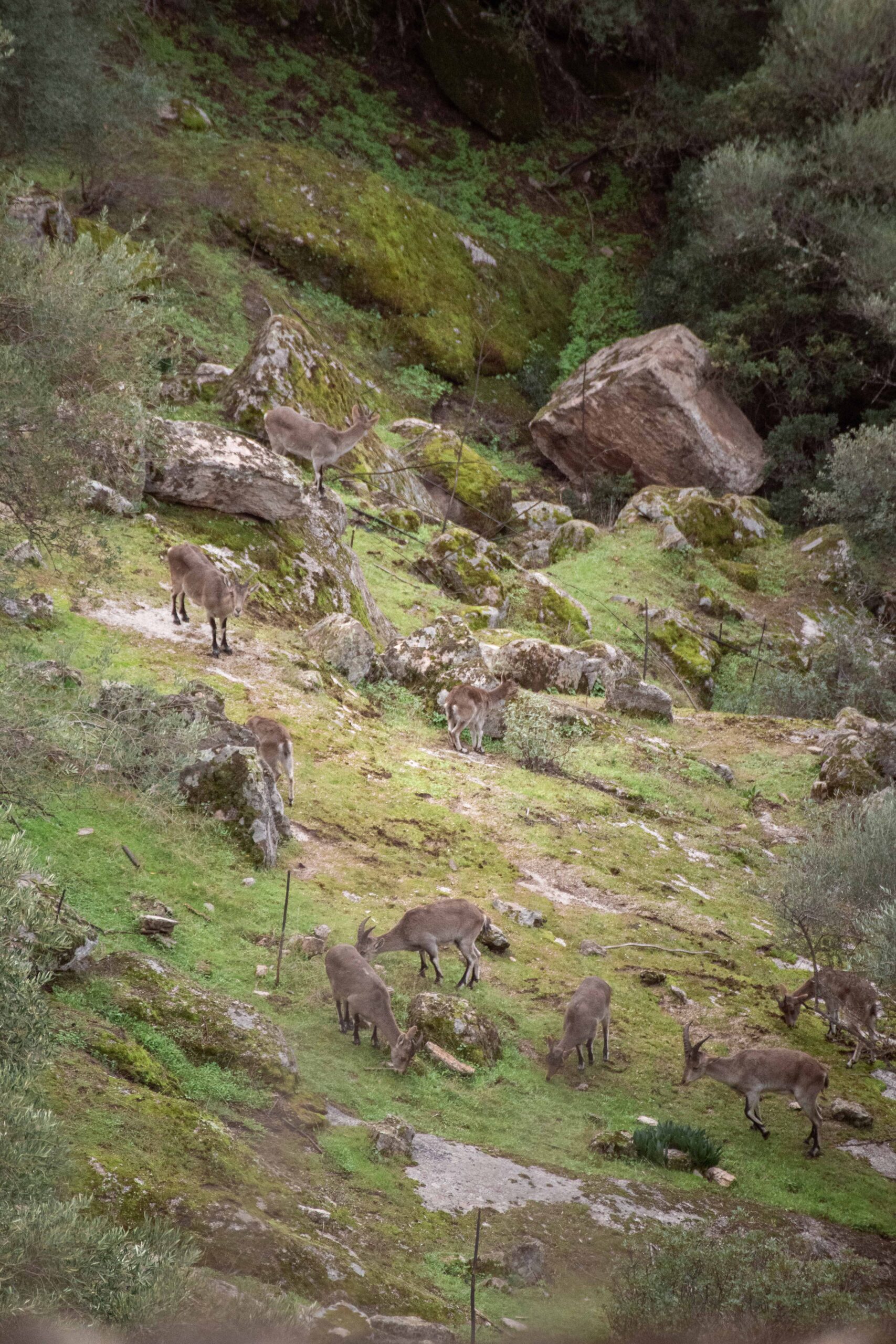
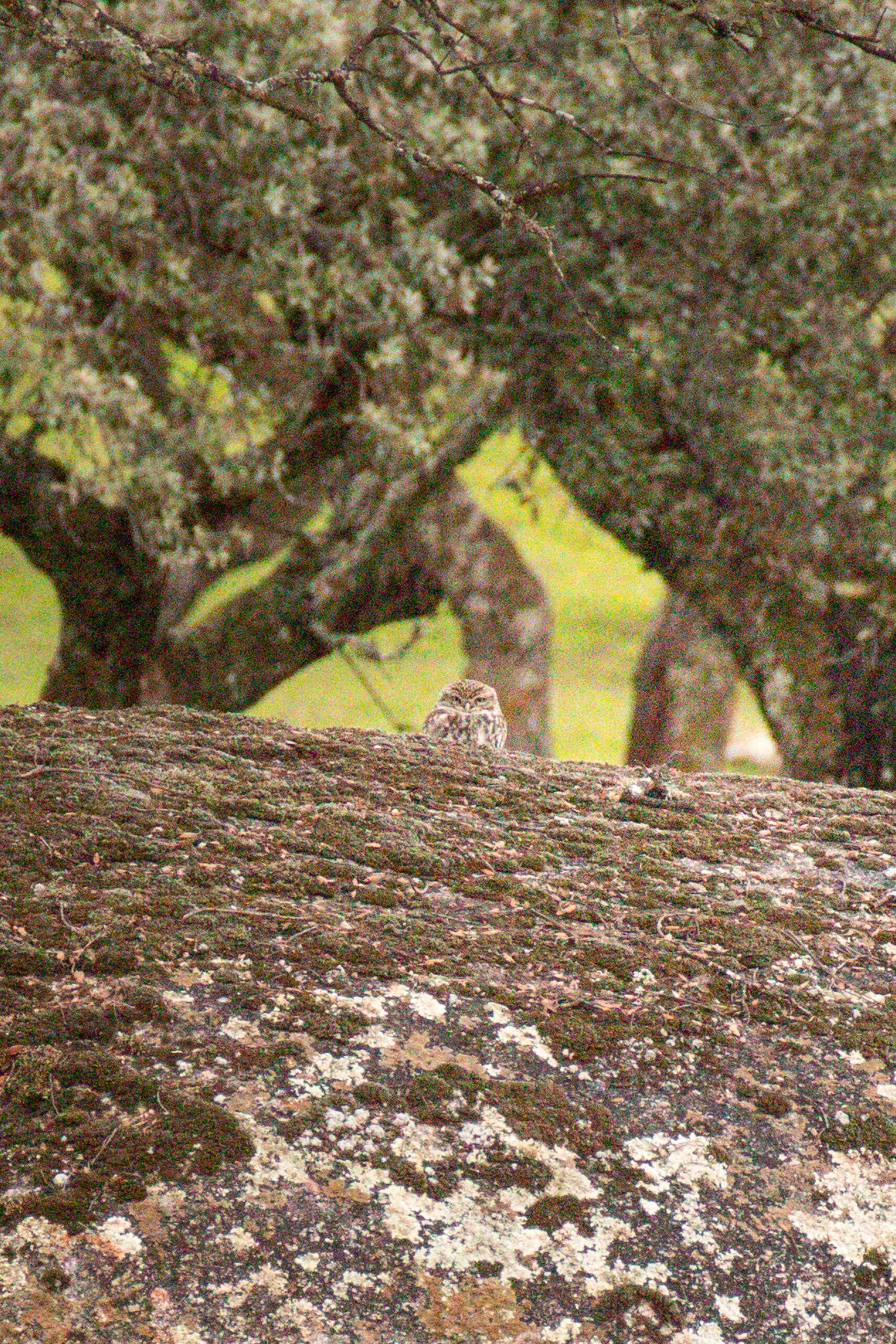
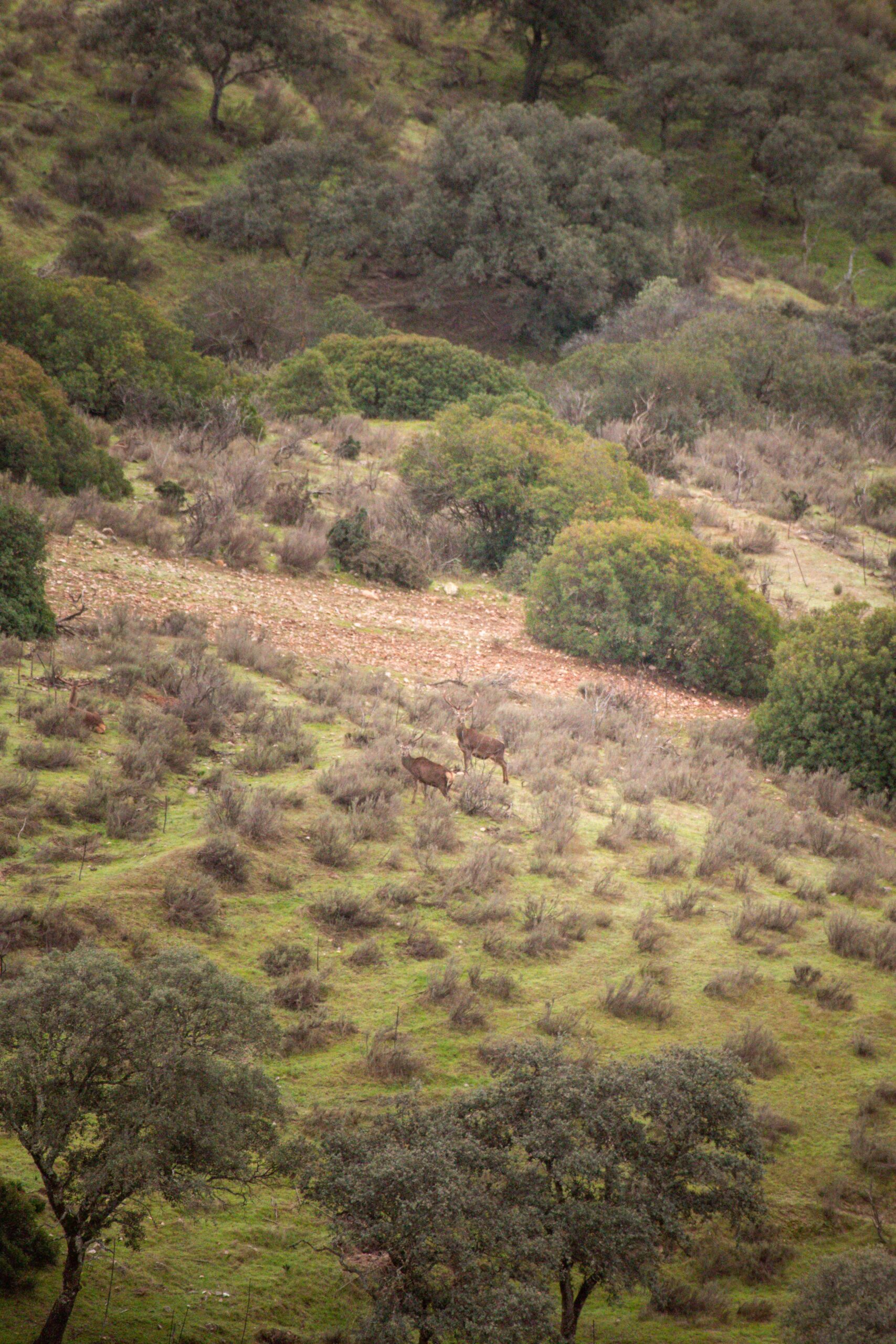
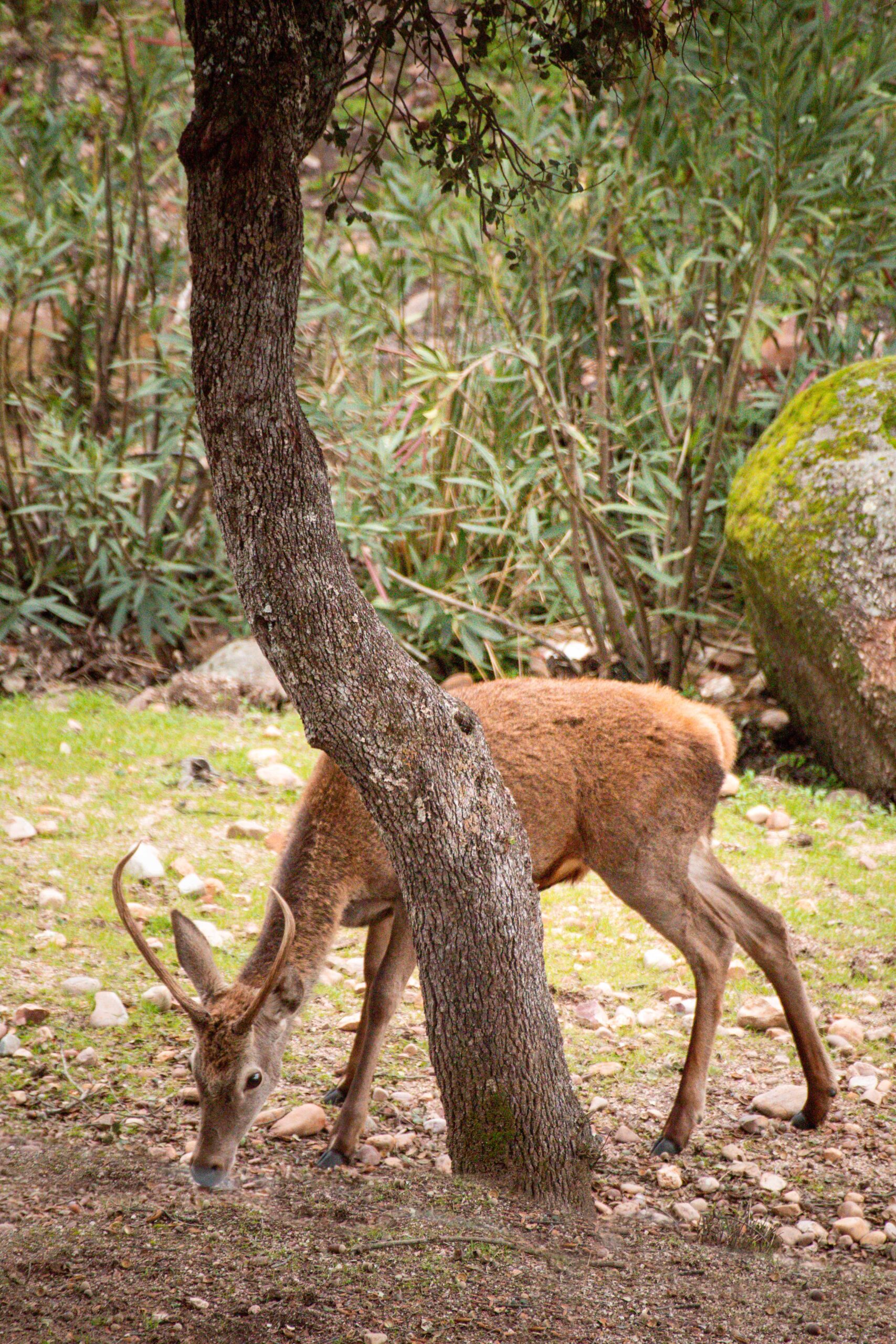
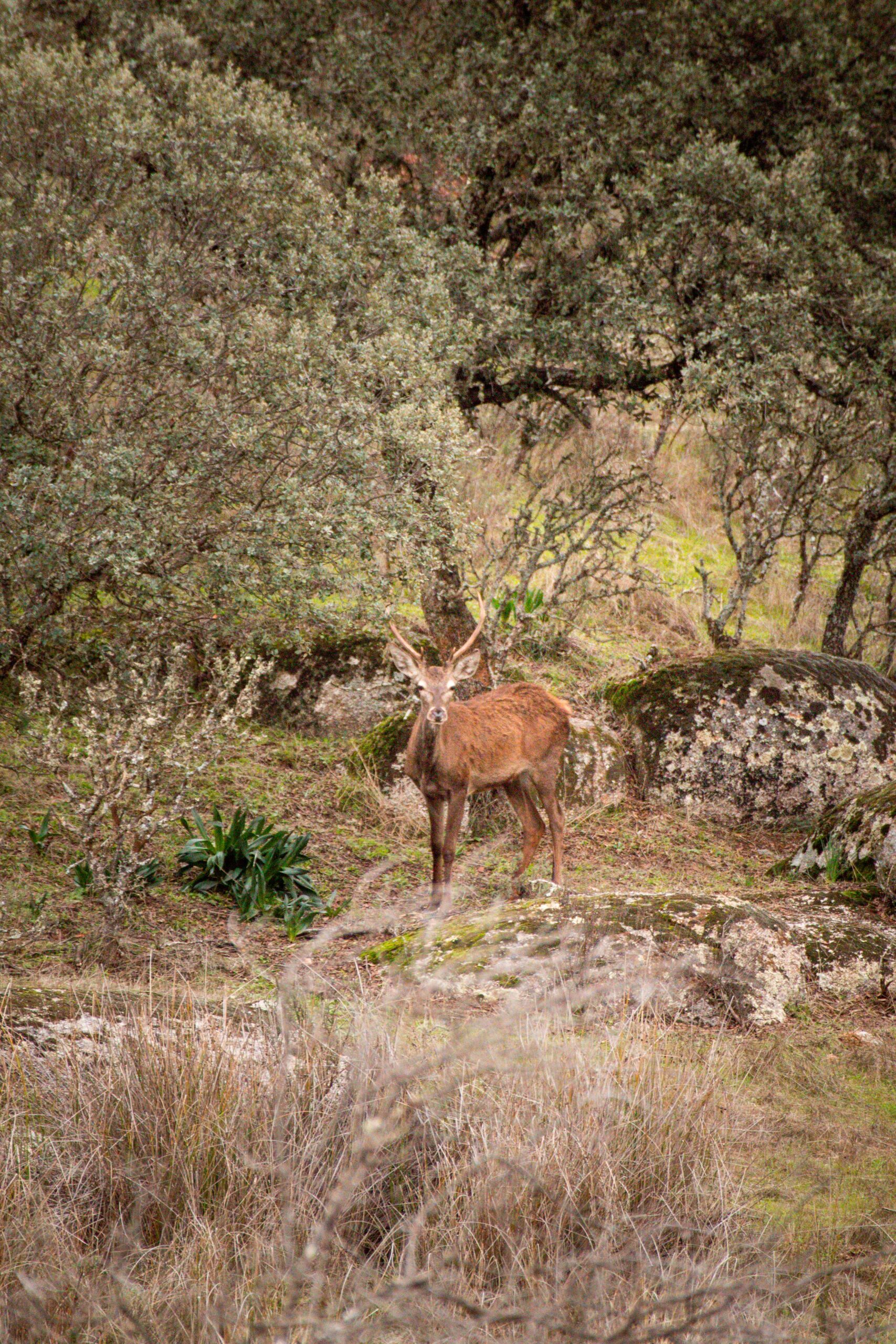
What are the best areas to spot the Iberian lynx in Andújar Natural Park?
Surprisingly, despite its large size, the Sierra de Andújar Natural Park offers very limited areas for hiking and observing wildlife. Indeed, the park is characterized by a vast number of privately-owned farms that are closed to visitors. On the bright side, this has played a crucial role in maintaining the ecosystem and preserving the essence of the Mediterranean forest. On the other hand, due to limited mobility for visitors in the natural park, public observation areas are scarce.
If you’re looking for the best place to spot the Iberian lynx in the park, your best bet is to follow the road to the Jándula reservoir (also named Camino de La Lancha). This area is known for its open scrubland and is a good spot for observing lynx behaviour. There is a lynx-watching area located about 5 kilometres before reaching the reservoir. Check the exact location on the map at the end of this article.
To reach this viewpoint, take the JH 5002 road into the countryside and turn left onto the La Lancha dirt road (JH 5004). However, be prepared for a bumpy ride as the road is not in the best condition and may take up to 15-20 minutes to drive. Upon arriving at a series of wooden lookouts or miradors, drive slowly and observe where other people are. This is likely where the lynx was last seen. On most days, you will meet other wildlife enthusiasts with binoculars or telephoto lenses patiently waiting to catch a glimpse of the endangered feline.
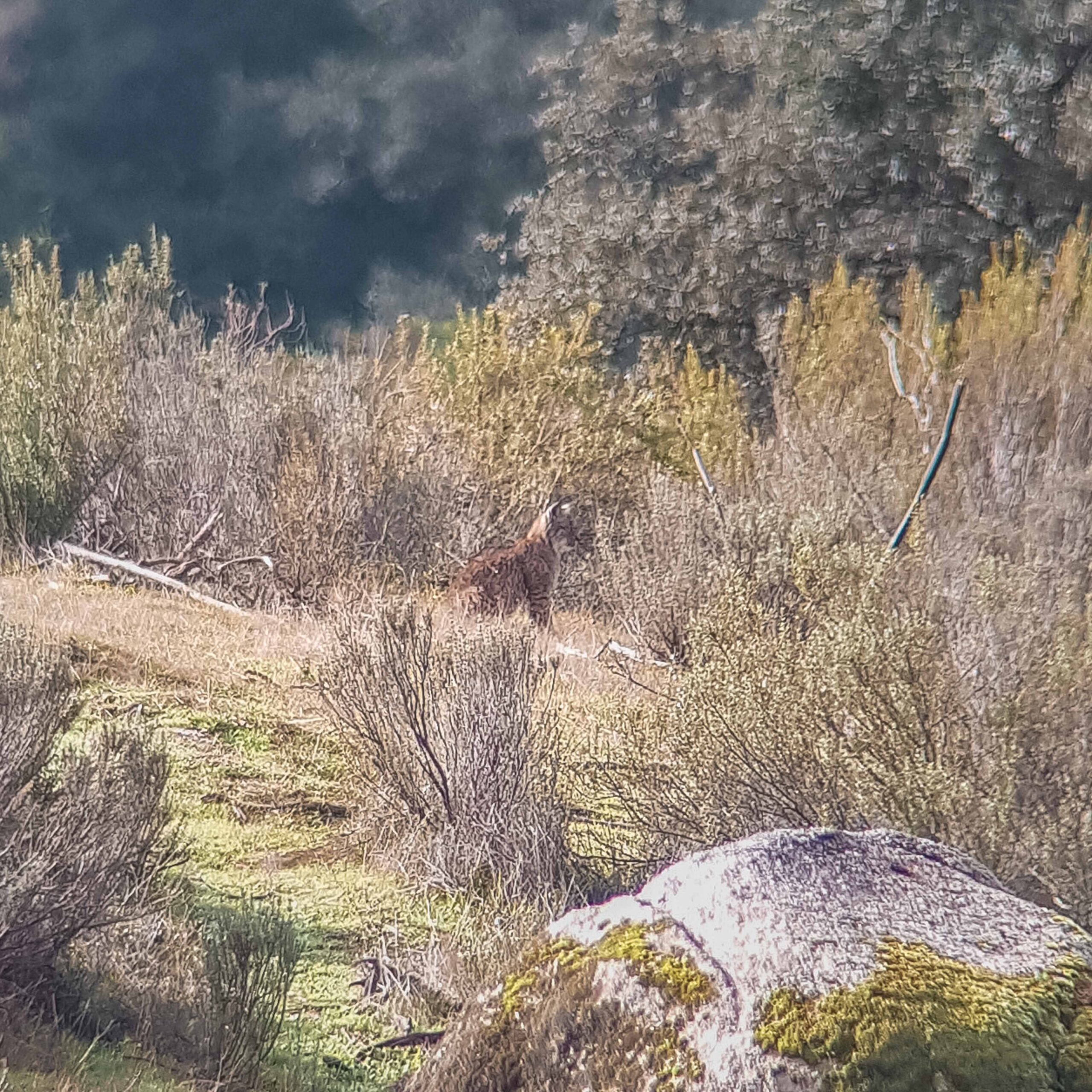
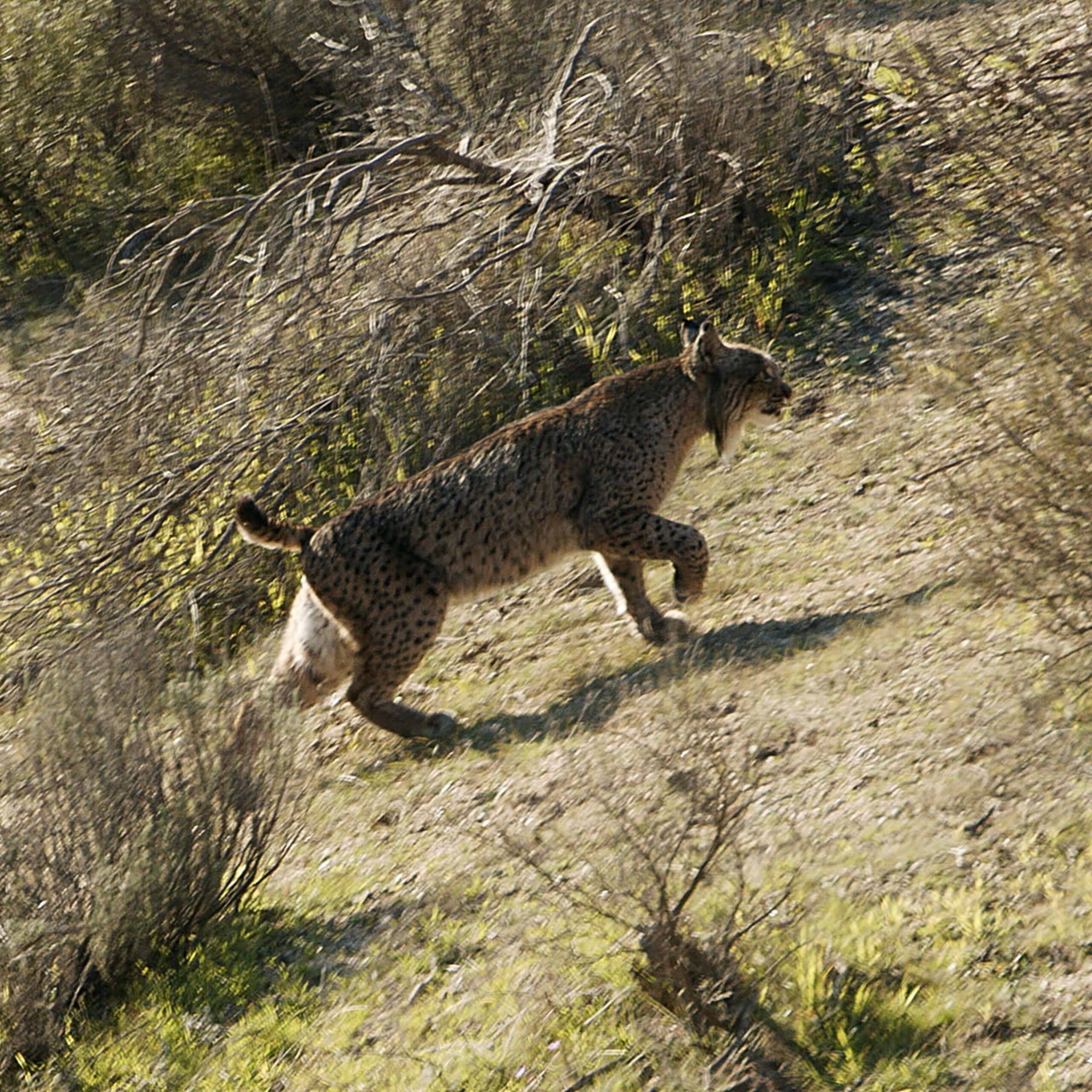
Tips for observing the Iberian lynx
Spotting an Iberian lynx in Andújar can be challenging as this elusive and scarce animal requires patience and a bit of luck. However, with the right approach, anyone can increase their chances of success. The base strategy is to select a well-positioned observatory that offers an expansive view of the terrain, including grassland clearings in addition to the scrub. By choosing the right vantage point and remaining patient, it is possible to catch a glimpse of this magnificent creature.
When observing the Iberian lynx, it is essential to do so in a way that does not disturb its natural behaviour. Here are some tips to follow to maximise your chances:
- Stay quiet and distant: Do not approach the lynx too closely, as this can cause it to become agitated or frightened. If the lynx shows signs of distress or moves away, do not follow it or try to get closer. Also, minimize noise and sudden movements, as this can startle the lynx.
- Choose the best time: Although the Iberian Lynx can be spotted during the day, it is primarily active during dawn and twilight. The time of year also matters: from December to March, Iberian lynxes are easier to spot, due to mating season.
- Use the right gear: Good quality binoculars – or even a telescope – are essential for observing wildlife. In terms of photography, I advise using a camera paired with a telephoto with at least a 300mm focal length to shoot.
- Pay attention to magpies and other birds: They can serve as helpful indicators of the presence of lynxes and other predators, as they often make sounds and movements that reveal their proximity.
Responsible Tours and Guides specialised in Iberian lynx observation
To maximise the chances of spotting the lynx, the best “tip” is to join a wildlife tour with a specialized company. A field guide to the local wildlife will help you identify other species you may encounter while in Andújar. They often have permits to access private farms and knowledge of sightings and areas of passage. Moreover, there’s ongoing solidarity between the different guides, which means they share updates and information with each other. That said, note that encounters with the lynx are never guaranteed, as it is a wild animal.
Preferably choose a responsible tour operator or guide who prioritizes the welfare of the lynx and its habitat. My personal recommendation is Birds&Lynx Ecotourism. They specialize in birdwatching and lynx spotting tours, and their guides have extensive knowledge of the local wildlife and ecology. I spent a wonderful day-tour with their guide Inma, who is incredibly knowledgeable, attentive and patient. All you need to observe wildlife (binoculars and telescope) is provided, plus breakfast, lunch (with vegan options!), and pick-up from accommodation.
In conclusion, spotting the Iberian lynx in the wild can be a thrilling experience. By following the tips above and choosing a responsible tour operator or guide, you can increase your chances of observing this elusive feline while contributing to its conservation.
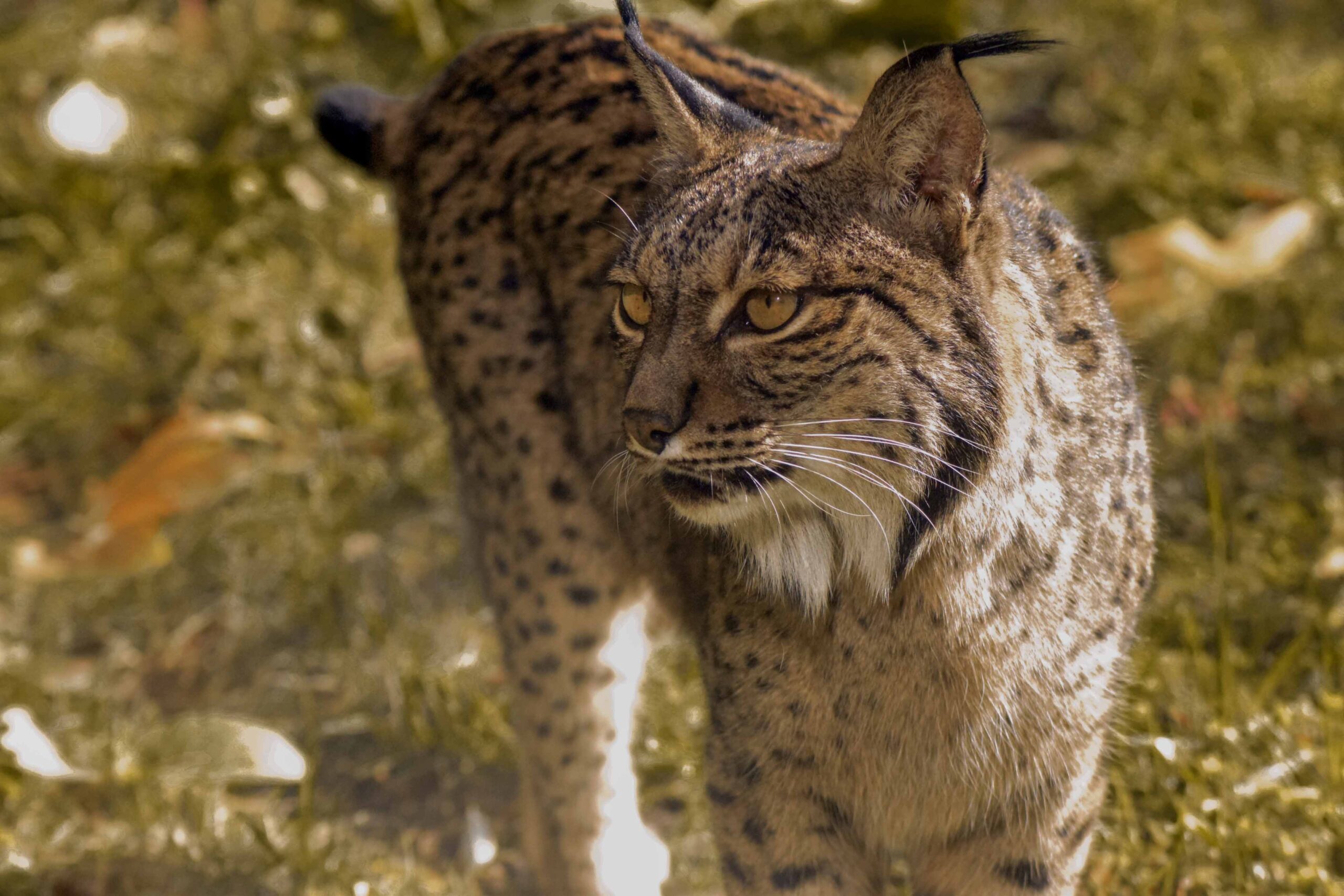
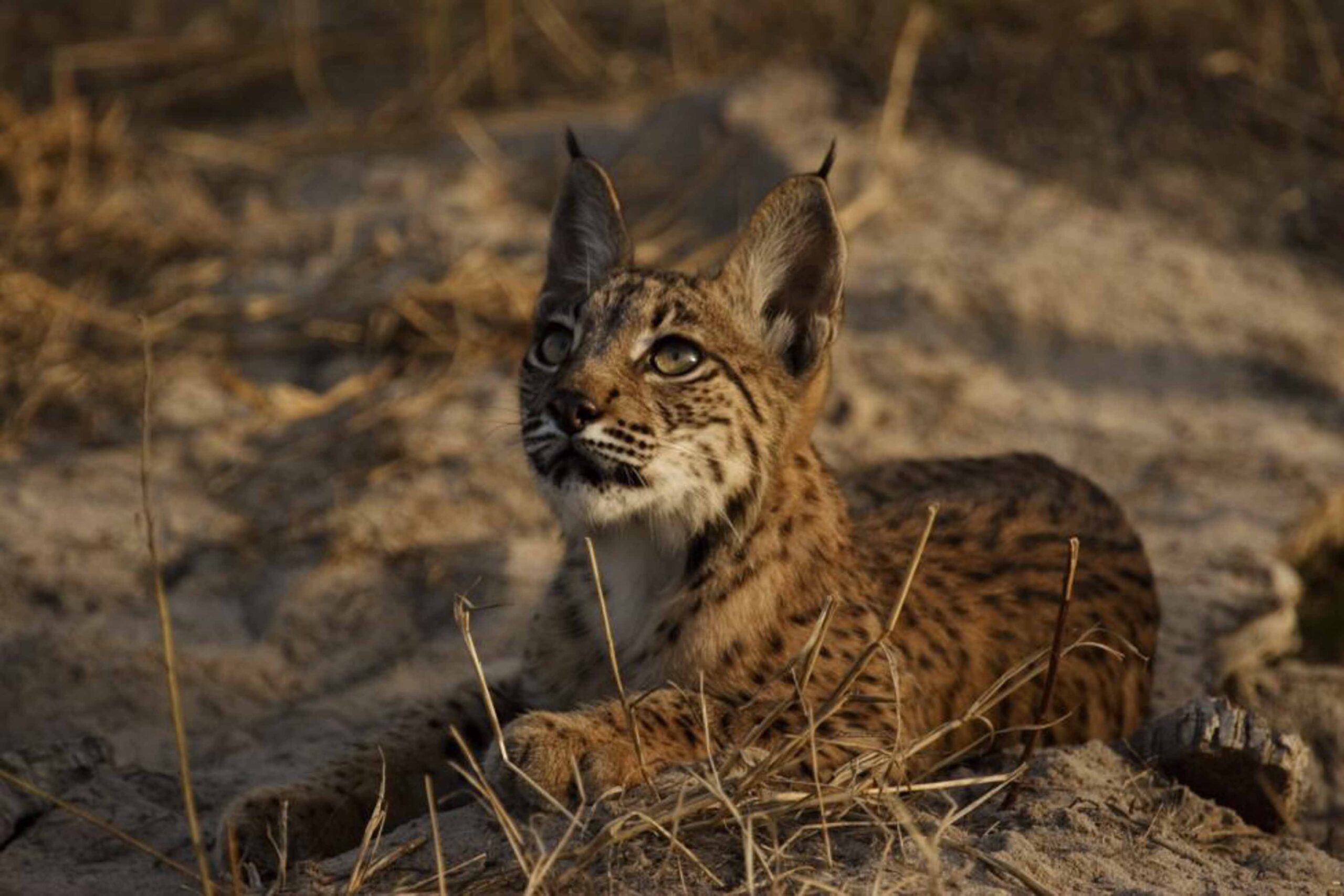
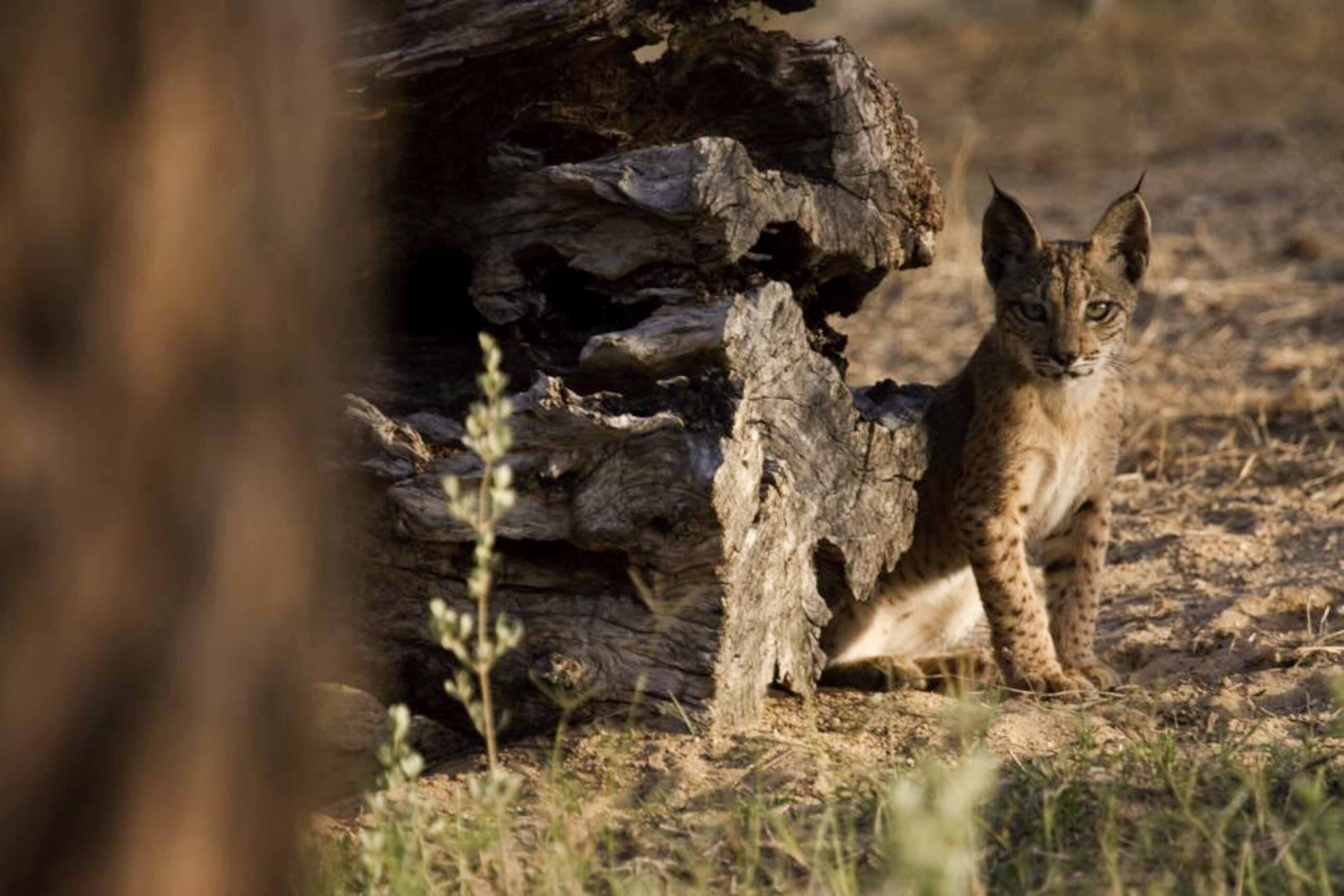
Planning your trip to Andújar Natural Park
Getting to Andújar Natural Park
From Cordoba
If you are coming from Cordoba, there are different ways to get to Andújar Natural Park:
- 🚘 By car: Take the A-4 highway towards Madrid and then switch to the A-6177 road. This route takes approximately 1 hour and 30 minutes by car (~110km).
- 🚍 By public transportation: Unfortunately, there is no way to get to the Iberian lynx viewpoint area by public transport, let alone soon enough to be there at dawn. I advise staying the night before in Andújar town and arranging a pick-up with your tour guide in the morning. To do so, take a train from Cordoba to the Andújar station; the journey takes about 1 hour and there are approximately 6 daily departures. Then, simply take a taxi (or walk) to your accommodation.
From Granada
If you’re coming from Granada, here are the transportation options to reach Andújar Natural Park.
- 🚘 By car: Take the A-92 highway towards Seville and then switch to the A-6177 road. This route takes approximately 2 hours and 15 minutes by car (~175 km).
- 🚍 By public transport: Take a bus from the Granada Bus Station to Andújar. The company Alsa operates one daily departure for a 2-hour direct journey from Granada to Andújar. If you can’t make it, first take a bus from Granada to Jaén, then another one from Jaén to Andújar.
Best places to stay near Andújar Natural Park
Naturally, the town of Andújar, located in Jaén, is an ideal location to use as a “base camp” while exploring the various routes to see the Iberian lynx in its natural habitat. It offers a range of infrastructure suitable for any type of traveller. The Municipal Tourist Office, situated in the Clock Tower, is the perfect place to obtain information on how to access the recommended areas for observing this elusive animal.
There are several accommodation options in Andújar, ranging from budget-friendly hotels to private villas. Some of the best places to stay include:
🛏️ Check more available accommodations near Andújar Natural park.
Please note that the prices mentioned above are indicated per night and based on the prices of March 2023. They are subject to fluctuation according to supply and demand, time of the year, and the will of the owners.
BONUS: Map of Sierra de Andújar Natural Park
To help you make the most of your time in the Sierra de Andújar Natural Park, I created a map that highlights the main viewpoints, trails and facilities. I hope you will enjoy it!
💡 To navigate this map, simply use your computer mouse or fingers to zoom in or out, and click on the icons to get more information about each location. You can access the index by clicking on the arrow in the top left corner. Additionally, if you want to save the map to your Google Maps account, click on the star next to the map’s title. To view your saved map on your smartphone or PC, open Google Maps, and navigate to ‘Your Places’ or ‘Maps’ in the menu. If you want to print the map or view it in a larger window, simply click on ‘View larger map’ in the top right corner.
I hope this article about how to spot the Iberian Lynx in Sierra de Andújar Natural Park has been helpful and informative!
📌 Liked it? Pin it!













